How Much Does a Doctor Visit Cost With and Without Insurance?
Without insurance, medical care can get pricy fast. Where you live, what doctor you’re going to, and what tests you need will all figure into your doctor’s visit bill. In this article, we’ll break down those costs and give you some tips for saving money.

What Goes into the Cost of a Doctor’s Visit?
Geography is one of the biggest factors in the price of a doctor’s visit. Most medical facilities pass some of their overhead expenses onto their patients. If you live somewhere with a higher cost of living, like California or New York City, you’ll likely pay more for doctors’ visits. The practice has to pay more for utilities and rent, and those costs show up in your bill. For example, Mayo Clinic’s Patient Estimates tool quotes $846 for a 60-minute office visit in Jacksonville, Florida, but $605 for the same visit in Wisconsin.
Like the cost of living, supplies and equipment will also end up on your tab. Say you need a strep test, blood draw, or Pap smear. The supplies needed for the test plus the cost of the lab fees will all figure into the price.
Bills for the same exams and procedures can also vary depending on what kind of facility you’re going to. Smaller practices and public health centers are often a lot cheaper than university or private hospital systems. This is due in part to their buildings being smaller and their overhead fees being lower.
Price of Out-of-Pocket Doctors’ Visits
The cost of a doctor’s office visit also depends on what kind of doctor and the procedure you need to have done. For example, an in-office general wellness checkup will be cheaper than a specialist procedure. If you have an emergency, an urgent care center will be much more affordable than the emergency room.
Primary Care Physician — Physical Exam
Physicals usually include blood pressure readings, cholesterol measurements, and vaccines. Prostate exams for men and Pap smears and breast exams for women are also often included. Pediatric physicals focus on the growth milestones for your child’s age. Doctors check height, weight, sleep patterns, diet, and the vaccines required by public schools.
The range for a yearly physical can be anywhere from $100 to $250 or more without insurance. A CVS Minutecare Clinic may charge just $59 for a sports physical, but not all organizations will accept this as proof of physical health.
Primary Care Physician — Procedures
On top of the base cost for physical exams, you may have extra charges for any specific tests or procedures you need. According to the Cardiometabolic Health blog, the most common procedures in primary care medicine include bloodwork, electrocardiograms, and vaccines/injections.
Bloodwork is one of the biggest cost wild cards. Certain tests can run you from as little as $10 to as much as $10,000 . Large national labs like Labcorp offer pricing on their website, so you know what to expect going in. For example, Labcorp’s General Health Blood Test , which includes a metabolic panel, complete blood count (CBC), and urinalysis, costs $78.
Electrocardiograms or EKGs check your heart health and can find cardi ac issues. This quick procedure involves monitoring your heartbeat through electrodes placed on your skin. While it’s a painless and accurate way to detect heart conditions, the costs can add up without insurance. Expect to pay as little as $410 or as much as $1700 for this procedure, depending on local prices.
Vaccines are often required before sending your kids to school. The CDC publishes a vaccination price list annually to give you an idea of what to expect. For example, they quote $19-$132 for DTaP, $21 for Hepatitis A, and $13-$65 for Hepatitis B. The COVID-19 vaccine, however, is free of cost, regardless of insurance status.
Urgent Care Visit
If you have an emergency but are stable, urgent care is much cheaper than the emergency room. According to Scripps , most urgent care centers and walk-in clinics can at least treat dehydration, cuts or simple fractures, fever, flu, strep, and UTIs. Note that if you have chest pain, a serious injury, seizures, a stroke, or pregnancy complications, you should go straight to the ER .
For a base exam at an urgent care facility, expect to pay between $100-$150 . That price will go up depending on what else you need. For example, Advanced Urgent Care in Denver quotes $80 for an X-Ray, $50 for an EKG, $135 for stitches, and $5 for a urinalysis. In comparison, expect to pay $1,000-$1,300 for the same procedures in the emergency room.
How to Lower Your Out-of-Pocket Medical Costs

Healthcare expenses may seem overwhelming without insurance. Luckily, there are many resources available to help you cover the costs.
Free & Low-Cost Immunization and Wellness Clinics
For standard vaccines and checkups, look for local free or low-cost clinics. Check out The National Association of Free and Charitable Clinics’ search tool to find a location near you. Your city’s public health department should also offer free or low-cost vaccines and basic medical care services.
Certain large vaccine manufacturers also offer vaccine programs. For example, Merck’s patient assistance program offers 37 vaccines and medicines free to eligible patients. The program includes albuterol inhalers and vaccines for Hepatitis A, Hepatitis B, MMR, and HPV.
Cash Negotiations
Most health systems offer lower rates for patients paying cash. Some even have free programs for low-income families. For example, Heritage UPC in North Carolina has a yearly membership for low-cost preventative care. In Northern California, the Sutter Health medical system offers full coverage for patients earning 400% or less of the Federal Poverty Income Guideline .
As of January 1, 2021, all hospitals in the United States now have to follow the Hospital Price Transparency Rule . That means they have to list procedure prices clearly on their website. You can also call medical billing before your appointment to discuss cash pay options.
Federal Medical Payment Support
If all else fails, there are federal programs to help you cover the cost of medical bills.
Organizations like The United Way and United for Alice offer grants for ALICE (asset-limited, income-constrained, employed) patients. These are people living above the poverty level, making them ineligible for other government programs but below the basic cost-of-living threshold.
Medicaid is available for children, pregnant women, and adults under a certain income threshold. If your income is too high to qualify for Medicaid but you can’t afford private insurance for your children, you may be eligible for the Children’s Health Insurance Program (CHIP) to cover your children’s medical care.
Use Compare.com for the Best Doctors’ Visit Prices
Navigating bills for a doctor’s visit can feel overwhelming, but Compare.com is here to help. With our price comparison tool, you can search all clinic and doctors’ office prices in your area. Compare makes sure you’re prepared for the cost of your checkup long before you schedule your appointment.

Nick Versaw leads Compare.com's editorial department, where he and his team specialize in crafting helpful, easy-to-understand content about car insurance and other related topics. With nearly a decade of experience writing and editing insurance and personal finance articles, his work has helped readers discover substantial savings on necessary expenses, including insurance, transportation, health care, and more.
As an award-winning writer, Nick has seen his work published in countless renowned publications, such as the Washington Post, Los Angeles Times, and U.S. News & World Report. He graduated with Latin honors from Virginia Commonwealth University, where he earned his Bachelor's Degree in Digital Journalism.
Compare Car Insurance Quotes
Get free car insurance quotes, recent articles.

Find Urgent Care today
Find and book appointments for:.
- Urgent Care
- Pediatric Urgent Care
- COVID Testing
- COVID Vaccine
Price Transparency
How much does a doctor’s visit cost without insurance.

According to the Agency for Healthcare Research and Quality, the average cost of a visit to the doctor’s office in 2016 was $265, with expenses ranging from $159 to $419 depending on the specialty.
- At an urgent care center you can expect to pay between $100-200 to see a provider, plus the cost of any treatments or testing you may need.
- Always ask for pricing information before you agree to any testing or treatment. You are entitled to this information.
Going to the doctor for any reason can be expensive. Without insurance, you can expect to pay approximately anywhere from $50–$350 just for a routine medical exam, which doesn’t include additional expenses such as x-rays , blood tests, or other lab work.
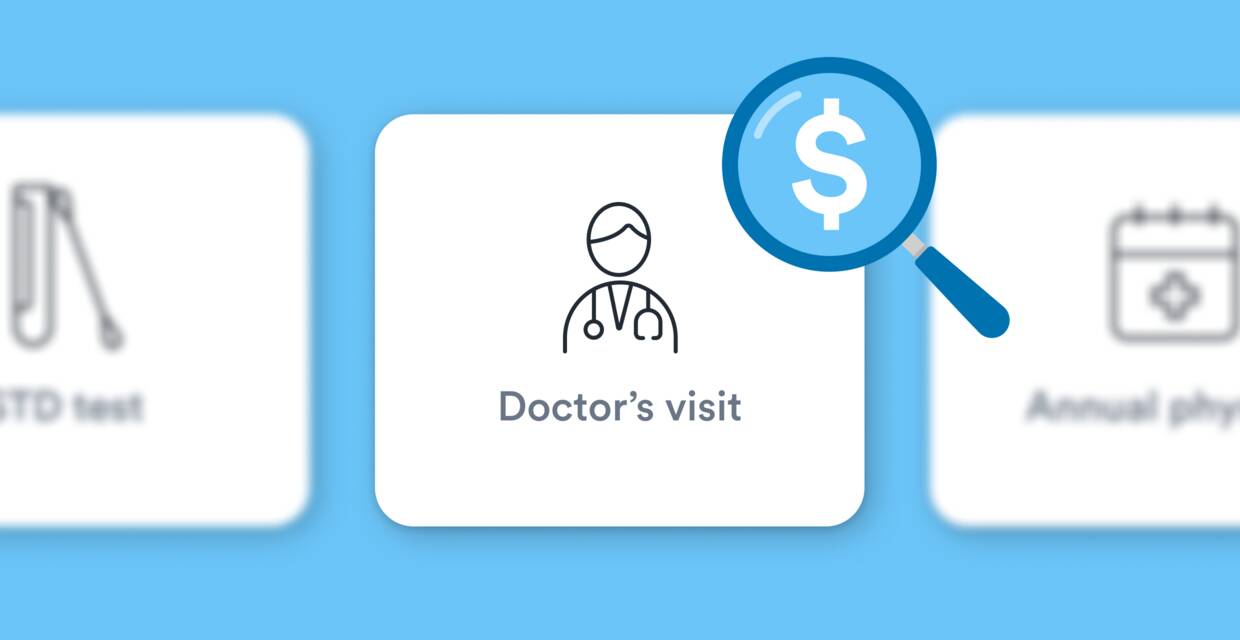
The cost of a doctor's visit
According to Solv’s Chief Medical Officer, Dr. Rob Rohatsch, the cost of a doctor’s visit can vary widely depending on factors such as:
- The type of doctor you are seeing
- The reason for your visit
- Where you see the doctor, for example, if you go to an urgent care facility or a doctor’s office
- Whether you are a new or established patient
- Any necessary tests or treatments
- Whether you need lab work
Visits to specialists such as primary care providers, pediatricians, and psychiatrists were lower than the average cost, while the most expensive doctor’s visits were for orthopedists and cardiologists.
Data from the Agency for Healthcare Research and Quality indicates that if you are visiting a doctor and don’t have insurance, you can expect to pay roughly the following amounts. The cost could vary depending on the factors listed above.
- Psychiatry: $159
- Pediatrics: $169
- Primary care: $186
- Dermatology: $268
- OB/GYN: $280
- Ophthalmology: $307
- Cardiology: $335
- All other: $365
- Orthopedics: $419
Additionally, if you are a new patient, there may be an additional charge associated with your new patient exam.
Where to see a doctor without insurance
If you don’t have insurance, the cost of your doctor’s visit can also be affected by where you go to see the doctor. There are many places you can seek medical care, some of which are more affordable than others, notes the Agency for Healthcare Research and Quality:
- Community health clinics often provide free medical care or low-cost care, including preventive care, health screenings, and vaccinations .
- Urgent care centers offer many health services. Many don’t require appointments, although your wait time may be less if you schedule an appointment in advance. You can expect to pay around $100 - $200 to see an urgent care provider, plus the cost of any treatments or testing you may need.
- Many health care facilities now offer telehealth services, which are often more convenient and more affordable. For some conditions, however, you may need to be seen in person for proper diagnosis and treatment.
- If your medical need is not urgent, and you know the type of doctor you need to see, you can schedule an appointment with a primary care physician or a specialist at their office. Be sure to ask about their payment policy in advance. If you don’t have insurance, you may be required to pay the entire bill at the time of service.
- If you have a medical emergency, you can visit the nearest emergency room. Even if you don’t have insurance, you will be able to receive treatment. However, this is typically the most expensive option. If you have a non-emergency medical condition that can wait until you can be seen at one of the other options, you will likely save money.
Paying self-pay prices for doctor’s visits
Even if you have insurance, you may be able to save money by paying cash for certain medical services. While preventive care may be covered at 100% by your insurance company, other tests and treatments may be applied to your deductible. If you have a high deductible and don’t expect to meet it – especially if it’s late in the calendar year – paying cash for your medical care may be a cheaper option.
Most doctor’s offices and health care providers charge a higher price when they bill the insurance company. For example, they may charge the insurance company $70 for a treatment or service, but if the patient is paying cash, they may only charge $60. This is known as the self-pay price . If you pay cash, the claim won’t be submitted to your insurance company, but you could end up saving money.
Always ask for pricing information before you agree to any testing or treatment. You are entitled to this information. As of 2021, hospitals are required to disclose self-pay prices, even when the patient has insurance. If the doctor’s office won’t provide you with this information, be persistent, or seek care somewhere else. If you plan on paying self-care prices, you aren’t limited to the providers in your insurance network. You’ll have a wider range of options to choose from, and you can choose a provider who is willing to provide fair, clear prices.
Let your doctor’s office know that you are paying out of pocket, and ask if they offer a discount for self-pay patients. Many doctor’s offices will offer special rates for patients who are paying cash or who do not have insurance; however, they may not advertise these rates, so it’s always a good idea to ask.
Know what you’ll pay ahead of time with Solv ClearPrice TM
According to Healthcare Finance News, more than half of Americans avoid going to the doctor when they’re sick due to high medical costs or unclear costs. Solv is committed to eliminating surprise medical bills with Solv ClearPrice™ . We partner with thousands of providers across the country who have agreed to display self-pay prices for their services. When you book an appointment on Solv, you will be able to see the self-pay price for many common services.
To schedule an appointment, search our directory for a provider in your area. Begin typing the service you are looking for, and choose from the list of options that appear. If you aren’t sure which type of doctor you need to see, you may want to try an urgent care clinic or a walk-in clinic . In many cases, you can schedule an appointment quickly and conveniently online, and many of our providers have same-day or next-day appointments available.
Frequently asked questions
What factors affect the cost of a doctor's visit, what is the average cost of a visit to the doctor’s office, are there any additional charges for new patients, where can i seek medical care if i don't have insurance, what is the self-pay price, are hospitals required to disclose self-pay prices, can i get a discount if i'm paying out of pocket, what is solv clearprice™.
Michael is an experienced healthcare marketer, husband and father of three. He has worked alongside healthcare leaders at Johns Hopkins, Cleveland Clinic, St. Luke's, Baylor Scott and White, HCA, and many more, and currently leads strategic growth at Solv.

Dr. Rob Rohatsch leverages his vast experience in ambulatory medicine, on-demand healthcare, and consumerism to spearhead strategic initiatives. With expertise in operations, revenue cycle management, and clinical practices, he also contributes his knowledge to the academic world, having served in the US Air Force and earned an MD from Jefferson Medical College. Presently, he is part of the faculty at the University of Tennessee's Haslam School of Business, teaching in the Executive MBA Program, and holds positions on various boards, including chairing The TJ Lobraico Foundation.
- Agency for Healthcare Research and Quality: Expenses for Office-Based Physician Visits by Specialty and Insurance Type, 2016 https://meps.ahrq.gov/data_files/publications/st517/stat517.shtml
- Hospital Price Transparency, Centers for Medicare and Medicaid (2022) https://www.cms.gov/hospital-price-transparency
- More than half of Americans have avoided medical care due to cost (2019) https://www.healthcarefinancenews.com/news/more-half-americans-have-avoided-medical-care-due-cost
- telemedicine
- primary care
- healthcare costs
- health insurance
- urgent care

Quality healthcare is just a click away with the Solv App
Book same-day care for you and your family
Find top providers near you
Choose in-person or video visits, manage visits on-the-go, related articles.
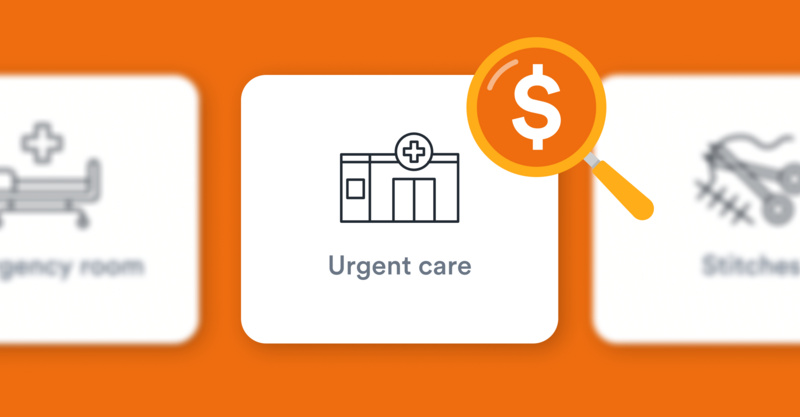
How Much Does Urgent Care Cost Without Insurance?
When you have a pressing medical issue, your first priority is getting to see a doctor, quickly. Getting an...
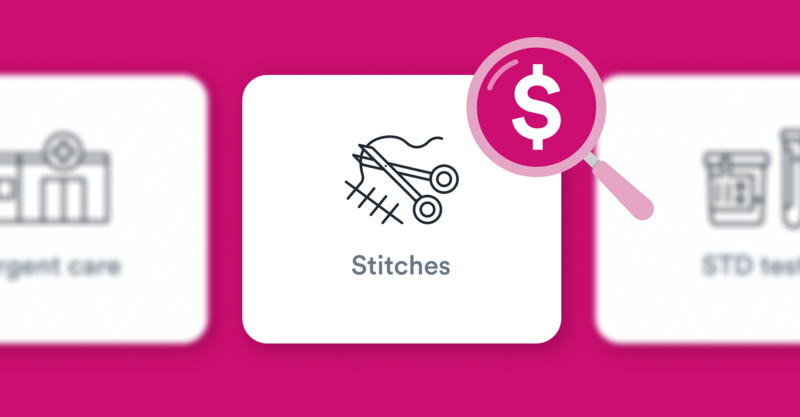
How Much Do Stitches Cost Without Insurance?
You fell and got a nasty gash that’s going to require stitches. You can easily get it stitched at an urgent care...

Why is My Copay Higher for Urgent Care Centers?
Urgent care centers can be a huge help when you or a family member needs immediate care for an illness or...
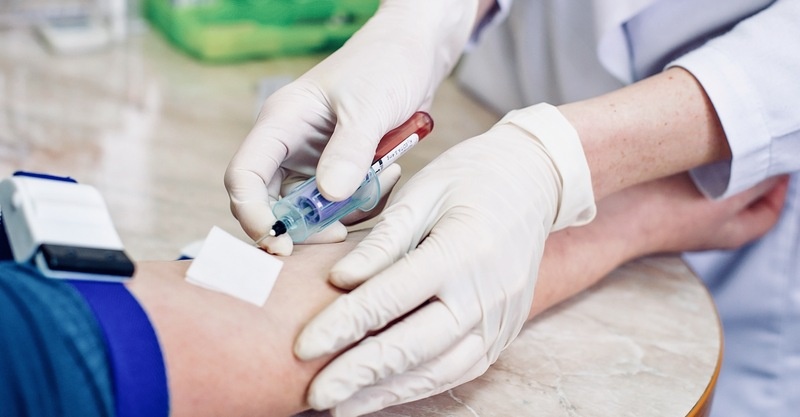
Cost of Blood Test Without Insurance in 2024
When you’re uninsured, you’re likely to keep a closer eye on all of your medical costs. However, staying...

How to Save Money on Healthcare Through Self-Pay
Americans hold a few core beliefs about how health insurance is supposed to work. They know that it’s meant to...

How Much Do Annual Physicals Cost Without Insurance?
If you are in need of an annual physical, you may be wondering how much annual physicals cost without...

Health Insurance 101: Key terms and plan types
The lack of transparency and easily accessible information can sometimes make it feel almost impossible to...

9 Things to Consider When Choosing Your 2020 Health Insurance
Open Enrollment began on the first of November–but what does this mean for you? Health insurance can be...
![gp visit fee Maintaining Healthy Cholesterol Levels [Infographic]](https://d1kve3ll6vvkpr.cloudfront.net/dir/media/W1siZiIsIjIwMTQvMDMvMDkvMTBfMjJfMzZfNThfY2hvbGVzdGVyb2wuanBnIl0sWyJwIiwidGh1bWIiLCI4MDB4NDE3IyJdLFsicCIsImVuY29kZSIsImpwZyIsIi1xdWFsaXR5IDk1Il1d/file.jpg?basename=Maintaining+Healthy+Cholesterol+Levels+%5BInfographic%5D&sha=7e0cef62b531a28b)
Maintaining Healthy Cholesterol Levels [Infographic]
Understanding how your heart works will give you greater insight so you can see just how dangerous cholesterol...

What You Need to Know About Surprise Bills
This year, more than 50% of Americans will struggle to pay for medical bills, according to data from Debt.com....
Related Health Concerns
Abdominal Pain
COVID-19 Vaccine
Cataract Surgery
Cold Medicine
Daycare Physical
Pinched Nerve
Sexually Transmitted Diseases
Urinary Tract Infection (UTI)
Urine Culture
This site uses cookies to provide you with a great user experience. By using Solv, you accept our use of cookies.
Cookies on citizensinformation.ie
We use cookies to collect information about how you use citizensinformation.ie. This helps us to improve your experience. You can find out more about the cookies we use in our Cookie notice . You can also read our Privacy policy . You can accept all cookies or you can chose which cookies to accept or reject. You can change your cookie preferences at any time by using the My cookie preferences link at the bottom of each page.
Cookie preferences
Cookies used by google analytics.
We use Google Analytics to measure how you use the website so we can improve it. We have configured Google Analytics to anonymise your IP address so that you are not personally identified. We gather information on:
- How you got to the site
- The pages you visit on citizensinformation.ie, and how long you spend on each page
- What you click while you are visiting the site

GP visit cards
What is a gp visit card, who can get a gp visit card, income limits for people aged under 70, how to apply for a gp visit card, more information on gp visit cards.
A GP visit card is a card that gives you free visits to a participating family doctor (GP). If you are not eligible for a medical card , you may be eligible for a GP visit card.
You can apply for a GP visit card online.
What does a GP visit card cover?
Your GP visit card covers the cost of visits to your GP and visits to GP out-of-hours services . You can read more about what services are available with the medical card and GP visit card.
What is not covered by the GP visit card?
The GP visit card does not cover hospital charges .
Prescribed drugs are not free but may be covered by the Drugs Payment Scheme .
You must be ordinarily resident in Ireland to apply for a GP visit card. This means that you are living in Ireland and intend to live here for at least one year.
You will qualify for a GP visit card with no means test if you are :
- Aged under 8 (see GP visit cards for children )
Aged over 70
- Getting Carer’s Benefit or Carer’s Allowance , at full or half-rate
If you are aged under 70, your income is assessed by the HSE to see whether you qualify for a GP visit card. See below for information about the HSE basic rates of income.
Your income is assessed by the HSE using the means test for people aged under 70 . However, the basic rates of income for the GP visit card are higher than the limits for the medical card.
Your weekly net income is compared to the HSE's weekly basic rate of income . This is your income after tax, PRSI and universal social charge (USC) have been deducted. There are extra allowances for children.
If your income is above the weekly basic rate you may still qualify for a GP visit card after you include allowable expenses such as childcare and rent (see ‘Allowable expenses’ below).
The weekly basic rates of income increased on 11 September 2023 and again on 13 November 2023. If you were not eligible in the past, you may be eligible now.
Allowable expenses
Some living expenses are allowable. This means they increase your weekly basic rate of income.
Allowable expenses include:
- Childcare costs
- Rent (not including any amounts paid by Housing Assistance Payment or Rent Supplement )
- Reasonable mortgage payments on your family home and other land or property.
- Mortgage protection insurance and associated life assurance.
- Home insurance.
- Maintenance payments you make.
- Nursing home, private nursing or home care costs for you or your spouse.
- The cost of public transport.
- Driving expenses if a car is required, at a rate of 30 cent per mile/18 cent per km. If a couple needs two cars to travel to work, a double allowance applies. The cost of parking can be taken into account.
- Reasonable contributions towards carpooling costs.
See examples of how you or your family’s income is calculated when you apply for a GP visit card.
Read the HSE National Assessment Guidelines for medical card and GP visit card (pdf) . You can also find a list of the documents you need to support your application.
Aged over 70 with dependants
If you are aged over 70, you are eligible for a GP visit card regardless of your income.
If you are over 70 and you have dependants who are aged under 70, for example, a spouse or partner your dependants may qualify for a GP visit card if your combined gross income is over €1050, but not greater than €1,400 a week.
If either of you are aged over 70, you will both qualify for a full medical card if your combined gross income is €1050 or less per week.
Finances over the qualifying financial threshold
When you apply for a GP visit card, the HSE will first assess your application for a medical card . If you don't qualify for a medical card, you will then be assessed for a GP visit card.
If your finances are over the qualifying financial threshold for a medical card or GP visit card, you may still qualify for a discretionary medical card if your medical expenses would cause you financial hardship without one.
If you want to apply for a discretionary medical card , you should also include information about your family’s medical expenses in your application.
Aged under 70
If you are under 70, you use the same application process to apply for a GP visit card as for a medical card . So, as part of the application process for the GP visit card, your entitlement to a medical card is automatically assessed.
You can apply for a medical card or GP visit card online on medicalcard.ie
You can also download an application form for the GP visit card and medical card (pdf) and email it to [email protected] or post it to:
National Medical Card Unit,
PO Box 11745,
If you are aged 70 or over, you can register for your GP visit card online .
You can also download the registration form for people aged 70 and over (pdf) and email it to [email protected] or post it to:
GP Visit Card Over 70s,
PO Box 12629,
You can also call 0818 22 44 78 to ask for a paper registration form.
Application for a spouse or partner
If you are over 70, with a dependant spouse or partner who is under 70, and you think your finances may be under the qualifying financial threshold, you can apply for GP visit cards for both of you. To do this, you use the standard medical card/GP visit card application form (pdf) and include details of your income and allowable expenses. (For the HSE weekly basic income rates, see ‘Dependants of people aged over 70’ above).
Applying if you are a carer
If you get Carer’s Benefit or Carer’s Allowance, at full or half-rate, you are eligible for a GP visit card. You can register for the GP visit card for carers by email or post .
Appealing your GP visit card application
If your application for a GP visit card is refused, you will receive a letter from the HSE to let you know. The letter will also set out the reasons why your application has been refused.
If you are not satisfied with the decision, you may have it reviewed. Your circumstances may have changed, or you may have left out some relevant information from the original application.
If you are not satisfied with the review, you can make an appeal to the Appeals Office of your HSE Area . You can also find the contact details for the Appeals Office in the letter of refusal from the HSE.
The Appeals Office will conduct a reassessment of your application. This will be conducted by HSE staff who were not involved in deciding on your original application.
Your entitlement to a GP visit card is reviewed periodically by the HSE. This is because your circumstances may change. If you don’t return your review form, your GP visit card may not be re-issued.
If you return your review form by the given date but the review process continues past the expiry date of your card, the HSE may extend your card’s validity so that you can continue to use it while the review is taking place. The extension is on a month-by-month basis, so it is advisable to contact the HSE Client Registration Unit (contact details below) to confirm that your card has been extended and continues to be valid.
Check the status of your application for a GP visit card on the HSE website . You will need the reference number from your application.
You can check if your GP visit card is still valid on the HSE website.
Contact Lo-call 0818 22 44 78 or your Local Health Office for more information on GP visit cards. You can also contact the Client Registration Unit.
Client Registration Unit
4th Floor HSE PCRS Finglas Dublin 11
Related documents
- Services for medical card and GP visit card holders Family doctors (GPs) provide certain services to medical card and GP visit card holders free of charge. 3262.3044
- GP visit cards for children under 8 Children under 8 are entitled to free visits to participating GPs. Find out how to register for the GP visit card for children. 3016.75
- Under 70s means test for medical card and GP visit card How your income is assessed for the medical card and GP visit card if you are under 70 years of age. 2785.8162
If you have a question about this topic you can contact the Citizens Information Phone Service on 0818 07 4000 (Monday to Friday, 9am to 8pm).
You can also contact your local Citizens Information Centre .
Manage cookie preferences

- For medical specialists
Medical Costs Finder
A tool to find and understand costs for gp and medical specialist services across australia.
This information is a guide only and should not be used as a quote or medical diagnosis.

See how the Medical Costs Finder can improve your healthcare experience.

Guide to costs
Get tips on how to discuss medical costs with your GP, specialist, and private health insurer.
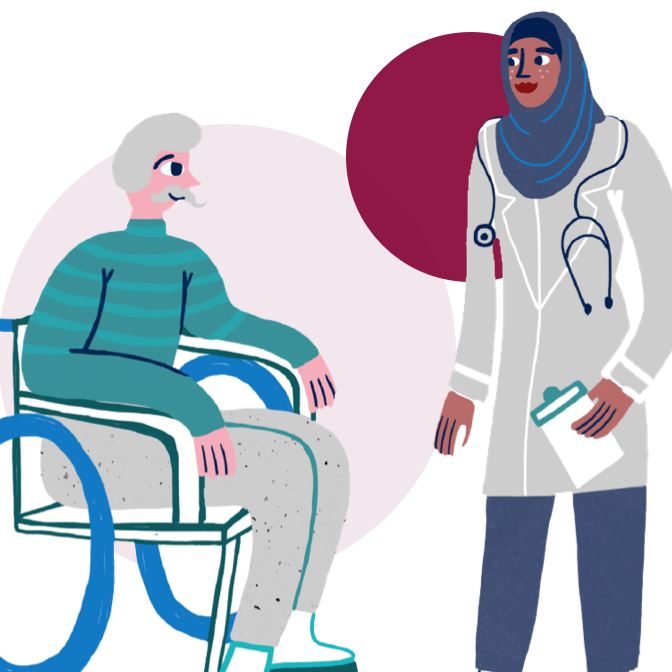
About the Medical Costs Finder
Learn more about who the Medical Costs Finder is for. You can also read the terms of use and disclaimer .
How to use the Medical Costs Finder
You can search for a procedure or service (including appointments), browse by category or enter an MBS item number. Explore typical costs across Australia. View indicative fees and costs of participating specialists.
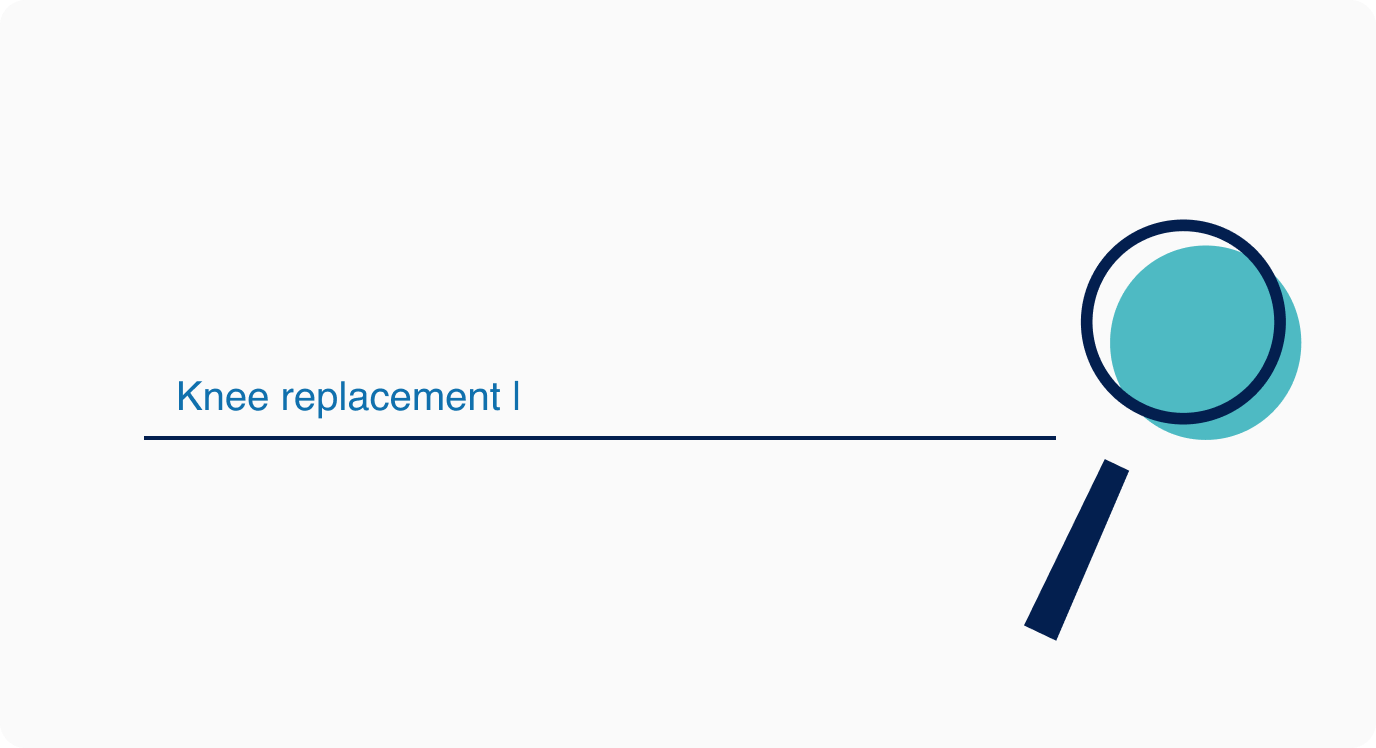
Step 1. Search or select from list
Type in the procedure in the text box. Or choose a procedure, speciality or service.

Step 2. Select procedure or service
Choose a procedure or service from the results listed.
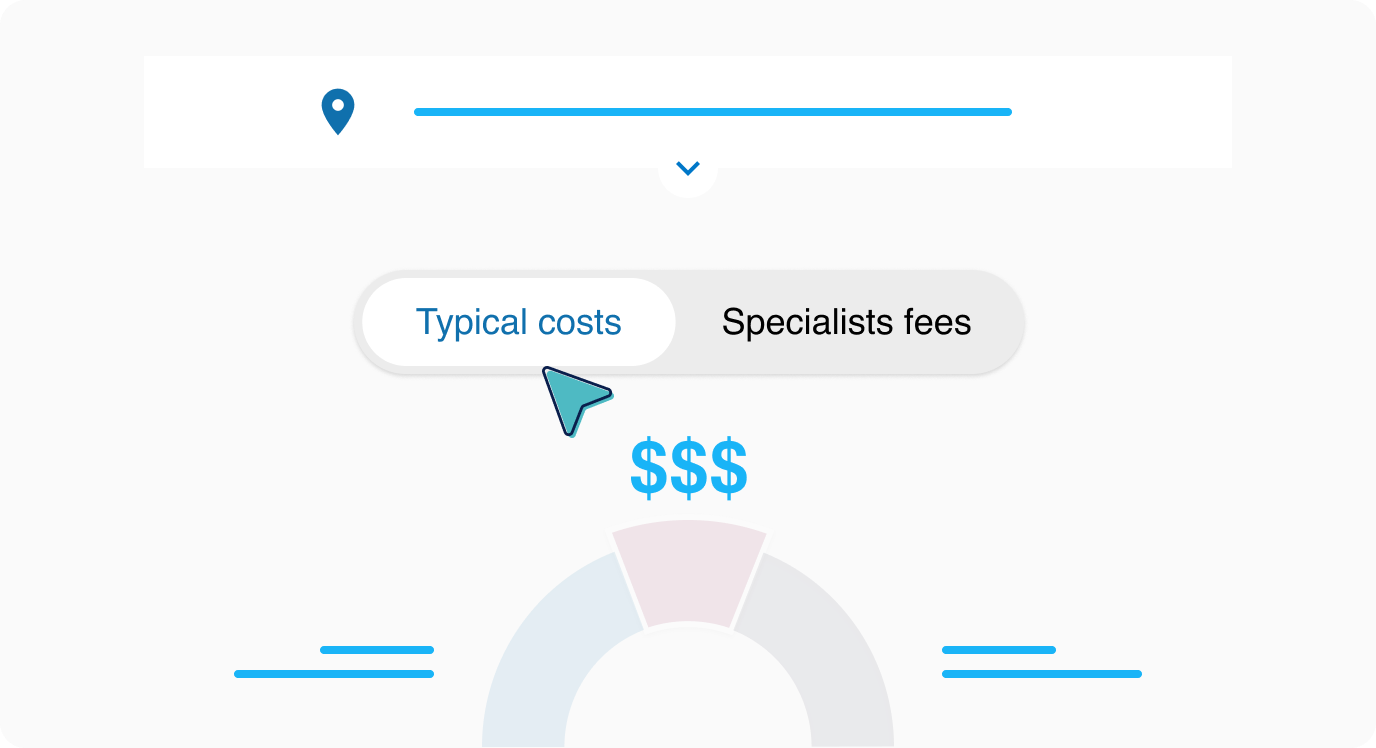
Step 3. Find typical costs near you
Explore the typical fees and costs for the selected service.
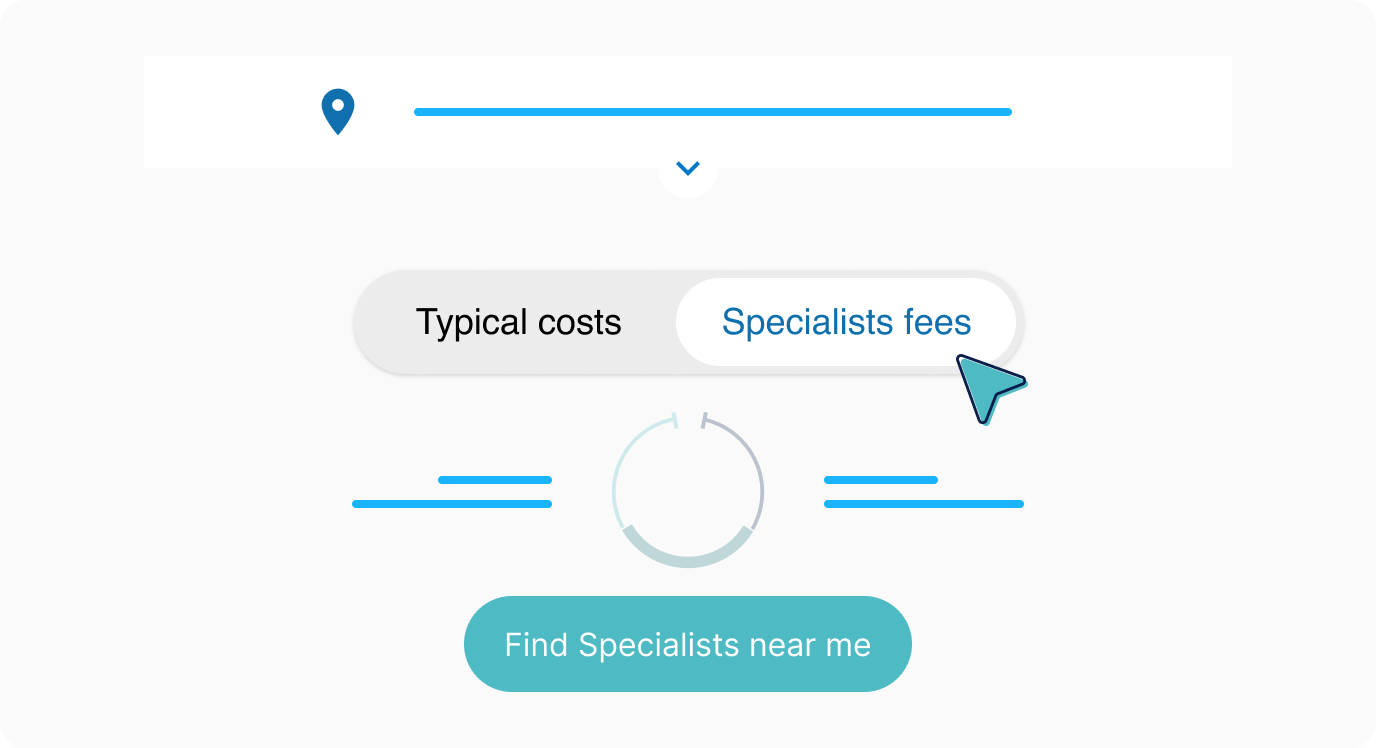
Step 4. View specialist fees and a typical patient journey
Click on patient journey and specialist fees to learn more about specialist fees. Understand what is involved for your procedure through the patient journey.

Step 5. Enter a postcode to find specialists near you
Enter a postcode to see participating specialists where available. Understand how different gap arrangements may change indicative fees.
Paying for doctor's visits
Doctors set their own fees. Children and some people who need to visit their doctor often can get free or subsidised visits.
Services for children
Many services for children under 14 are free.
Free health services for children
If you visit the doctor often
If you visit your doctor more than 12 times a year, your doctor can apply to the Ministry of Health for a High Use Health Card (HUHC) for you. This may reduce the cost of your future visits.
High Use Health Card
A Community Services Card can help you and your family with cheaper healthcare costs. You may pay less for some health services by simply showing your card.
Community Services Card
Doctor’s fees
Doctors’ practices and medical centres are privately owned and set their own fees so check with them to see what their costs are.
Who to contact for more help
If you need more help or have questions about the information or services on this page, contact one of the following agencies.
Ministry of Health
Senior Services
Utility links and page information
JavaScript is currently turned off in your browser — this means you cannot submit the feedback form. It’s easy to turn on JavaScript — Learn how to turn on JavaScript in your web browser. If you’re unable to turn on JavaScript — email your feedback to [email protected] .
Do not enter personal information. All fields are optional.
You must enable JavaScript to submit this form
Contact NZ government
- A-Z of government agencies
- Contact details by topic
About this website
- About Govt.nz
- Feedback about Govt.nz
- The scope of Govt.nz
Using this website
- Accessibility
- Terms of use
Date printed 23 August 2024
- Skip to primary navigation
- Skip to main content
- Skip to primary sidebar
- Skip to footer

- Best Global Medical Insurance Companies
- Student Insurance
- Overseas Health Insurance
- Insurance for American Expats Abroad
- Canadian Expats – Insurance and Overseas Health
- Health Insurance for UK Citizens Living Abroad
- Expat Insurance for Japanese Abroad
- Expat Insurance for Germans Living Abroad
- Travel Health Insurance
- Trip Cancellation Insurance
- Annual Travel Insurance
- Visitors Insurance
- Top 10 Travel Insurance Companies
- Best Travel Insurance for Seniors
- Evacuation Insurance Plans
- International Life Insurance for US Citizens Living Abroad
- The Importance of a Life Insurance Review for Expats
- Corporate and Employee Groups
- Group Global Medical Insurance
- Group Travel Insurance
- Group Life Insurance
- Foreign General Liability for Organizations
- Missionary Groups
- School & Student Groups
- Volunteer Programs and Non-Profits
- Bupa Global Health Insurance
- Cigna Close Care
- Cigna Global Health Insurance
- Cigna Healthguard
- Xplorer Health Insurance Plan
- Navigator Health Insurance Plan
- Voyager Travel Medical Plan
- Trekker Annual Multi-Trip Travel Insurance
- Global Medical Insurance Plan
- Patriot Travel Insurance
- Global Prima Medical Insurance
- Student Health Advantage
- Patriot Exchange – Insurance for Students
- SimpleCare Health Plan
- WorldCare Health Plan
- Seven Corners Travel Insurance
- Trawick Safe Travels USA
- SafeTreker Travel Insurance Plan
- Unisure International Insurance
- William Russell Life Insurance
- William Russell Health Insurance
- Atlas Travel Insurance
- StudentSecure Insurance
- Compare Global Health Insurance Plans
- Compare Travel Insurance Plans
- Health Insurance in the USA
- Health Insurance in Mexico
- Health Insurance in Canada
- Health Insurance in Argentina
- Health Insurance in Colombia for Foreigners
- Health Insurance in Chile
- UK Health Insurance Plans for Foreigners
- Health Insurance in Germany
- French Health Insurance
- Italian Health Insurance
- Health Insurance in Sweden for Foreigners
- Portuguese Health Insurance
- Health Insurance in Spain for Foreigners
- Health Insurance in China
- Health Insurance in Japan
- Health Insurance in Dubai
- Health Insurance in India
- Thailand Health Insurance
- Malaysian Health Insurance for Foreigners
- Health Insurance in Singapore for Foreigners
- Australian Health Insurance for Foreigners
- Health Insurance in New Zealand
- South Africa Health Insurance for Foreigners
- USA Travel Insurance
- Australia Travel Insurance
- Mexico Travel Insurance
- News, Global Health Advice, and Travel Tips
- Insurance Articles
- Travel Advice and Tips
- Best Hospitals in the United States
- Best International Hospitals in the UK
- Best Hospitals in Mexico
Or call for a quote: 877-758-4881 +44 (20) 35450909
International Citizens Insurance
Medical, Life and Travel Plans!
U.S. 877-758-4881 - Intl. +44 (20) 35450909
How Much Does Healthcare Cost in the U.S.?

The United States is notorious for having the highest healthcare costs in the world. You've likely heard stories of Americans going bankrupt due to medical bills, often because they don't have enough insurance or any at all. Unfortunately, these stories are not uncommon and highlight a serious issue with the affordability of healthcare across the country.
Whether you're considering visiting the United States, preparing for a possible move, or simply curious about the country's healthcare system, it's important to understand the potential financial burden you might face.
So, what is the actual cost of healthcare in the U.S. ? To give you a clearer picture, we've gathered the latest 2024 average prices for various common procedures and treatments without health coverage, so can make informed decisions before coming to the country and avoid any unpleasant surprises.

High-Quality Care Comes with a Price
Despite its mixed reputation, the U.S. healthcare system excels in many areas. It leads the world in medical research and innovation and drives the development of new treatments, technologies, and medicines. The country is also known for its excellent emergency care and high survival rates for serious conditions like heart attacks and strokes.
In addition, American doctors and healthcare professionals receive extensive training from some of the best medical schools and programs in the country. The U.S. healthcare system also offers patients many choices and access to the latest treatments, with a focus on personalized care.
However, high-quality care comes with a price, and healthcare costs in the U.S. are incredibly expensive. As a result, traveling to or living in the country can become extremely costly without sufficient coverage to manage the costs.

Find the Best International Medical Insurance
- Compare multiple quotes and coverage options
- Work with an insurance expert at no additional cost
- Find the best plan for your needs and budget
Why Is U.S. Healthcare So Expensive Compared to Other Countries?
Whether you are a resident, expat, or visitor to the U.S., you can't deny that the average cost of healthcare is much higher compared to other countries. This is not the result of one particular factor but rather a combination of issues that all contribute to increasing prices.
The lack of a universal healthcare system , high administrative costs, expensive medical technology, and higher prices for services all play a role. Other factors such as wasteful spending, high legal costs, and unregulated drug prices also drive up the cost of care.
Additionally, medical professionals in the United States earn higher salaries than their counterparts in other countries, which contributes to higher healthcare costs. Some hospitals operate as for-profit businesses, which further drives up costs as they aim to maximize profits by charging higher prices for services and treatments. Moreover, doctors often run a lot of tests out of fear of malpractice lawsuits.
All these factors combine to make healthcare unaffordable for many, especially those without health coverage to manage the costs.
Read More: US Health Insurance for Non-Citizens
How Much Does Healthcare Cost Without Insurance?
The infographics below show the average costs of common procedures in the United States, as well as unexpected medical treatments without coverage. While these are estimates and actual prices may vary depending on where you are and how complex the care is, they offer a good idea of what you might face as an expat or visitor without travel or international health insurance .
How Much Is Emergency Transport and Care?
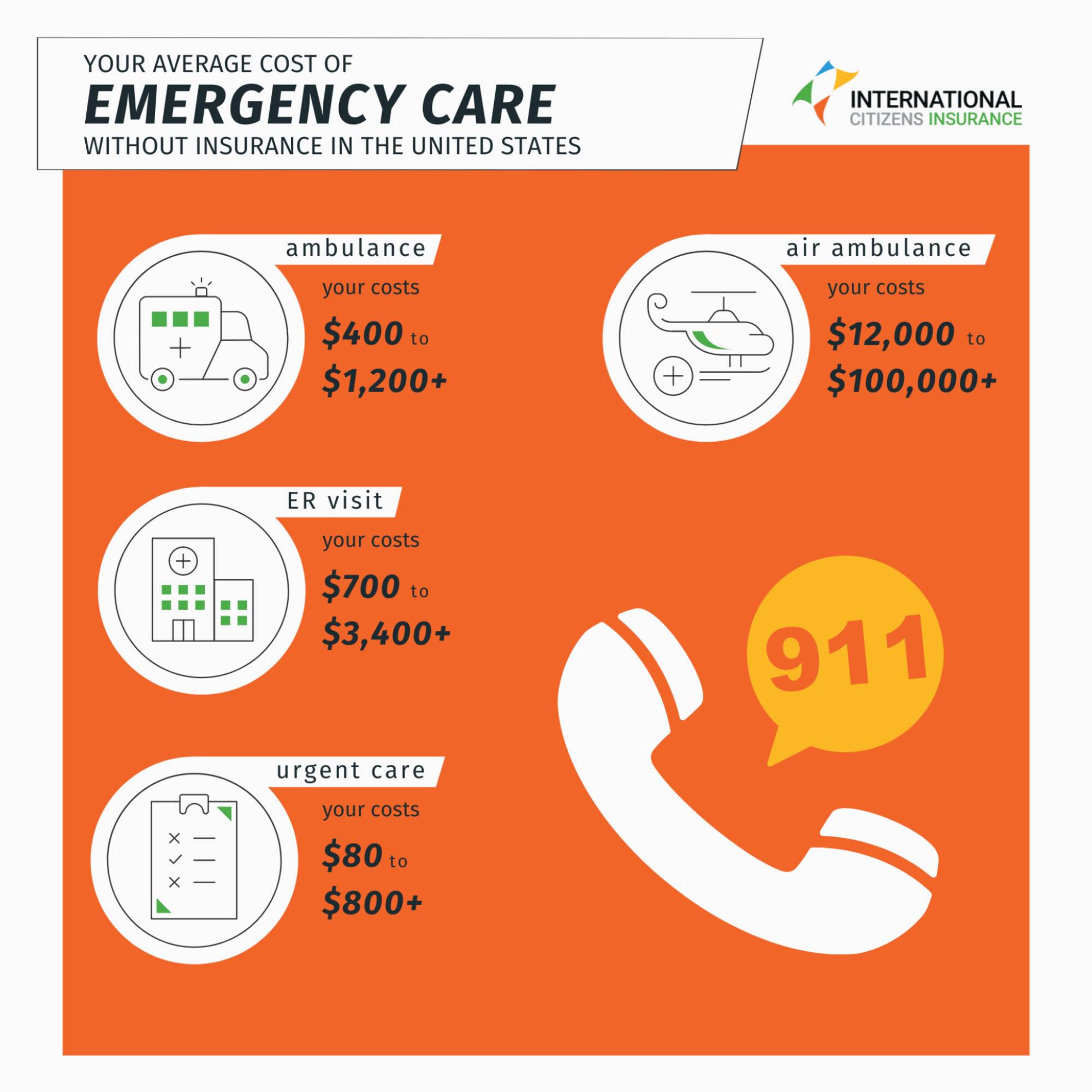
If you become ill and need emergency care, your bills will begin adding up right away. An ambulance ride to the hospital starts at $400 and can reach up to $1,200 or more. And that’s just for the pickup – if you need any procedures in the ambulance, the costs can add up before you even reach the hospital. If you need air transport, the expenses are even higher, with emergency evacuation starting at around $12,000 and exceeding $100,000 in extreme cases.
An ER visit can cost between $700 and $3,400, depending on the type and complexity of care you need. If you have to stay overnight, an extra $5,000 might be added to your bill. These costs vary based on where in the U.S. you are treated and the nature of your emergency, but without coverage, it can be very expensive.
One way to save money if you need immediate attention is to go to an urgent care clinic instead of the ER. While you might still face additional costs for treatment, tests, and medications, the visit itself usually ranges from $80 to $800 or more.
What Is the Average Cost of Cancer Treatment Without Health Insurance?
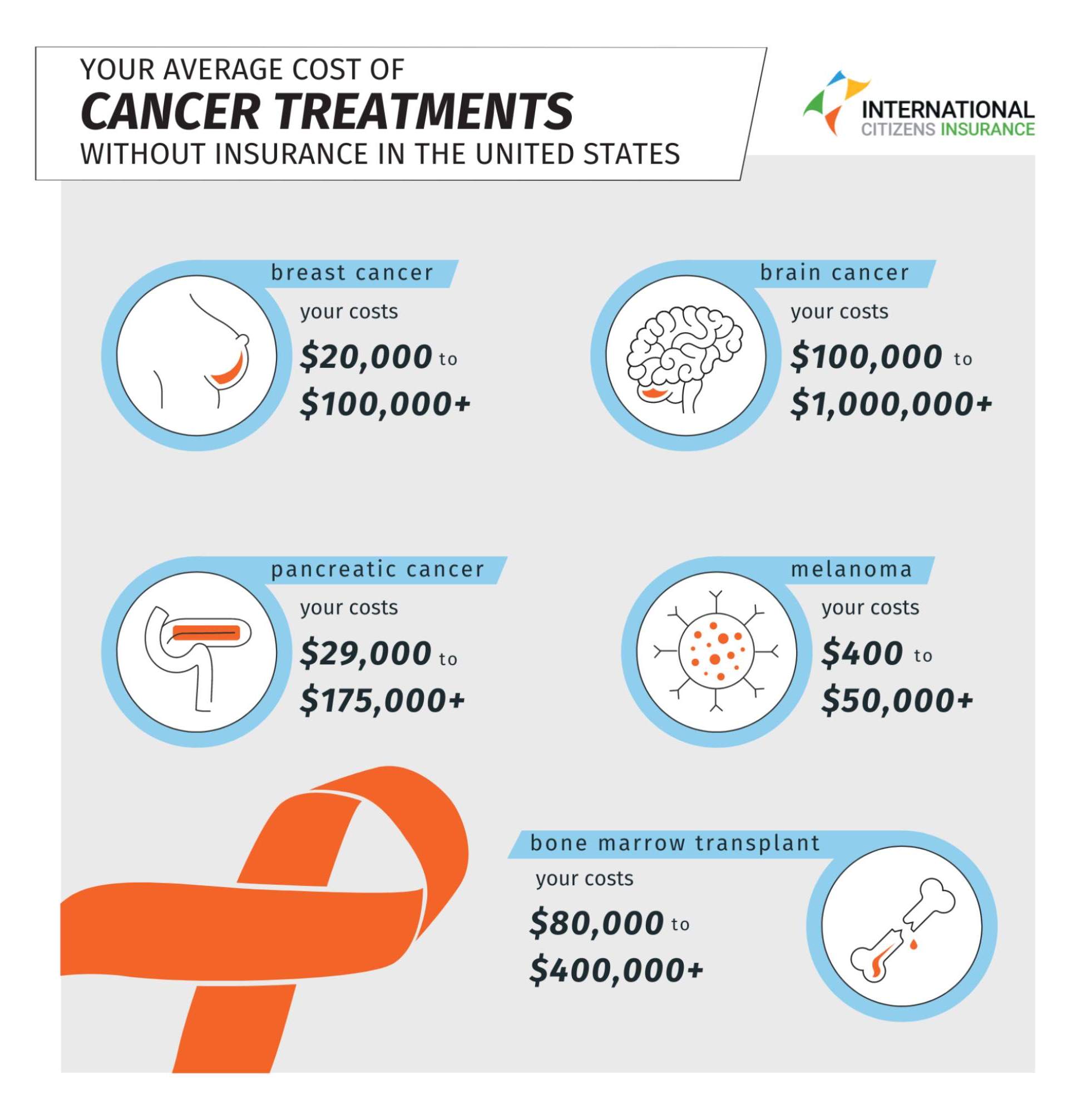
Cancer is something no one wants to think about, but it's important to understand the potential costs if it does become a reality.
Unfortunately, cancer care in the U.S. is very expensive. For example, early-stage melanoma might cost as little as $400, but without coverage, the cost can rise to $50,000 or more. Breast cancer costs can vary widely depending on the stage at which it is detected, but tend to start around $20,000 and can exceed $100,000.
Pancreatic cancer treatment can range from $29,000 to $175,000, while a bone marrow transplant can cost as much as $400,000 or more. Meanwhile, the price of treating brain cancer can exceed $1 million.
How Much Do Lab Tests Cost Without Insurance?
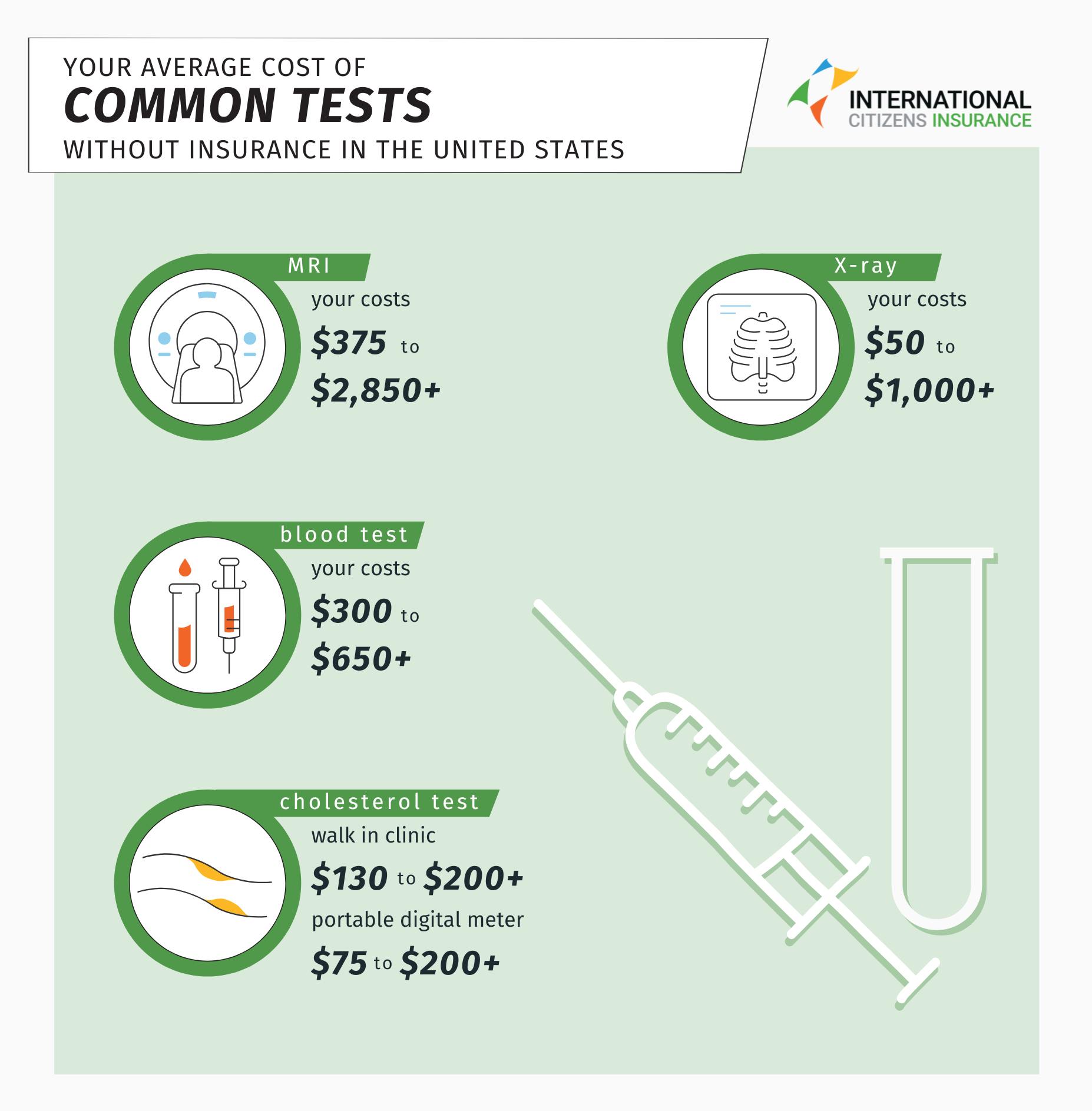
Lab tests are often essential when a doctor is trying to diagnose your medical issues. However, this is another area where the cost of U.S. healthcare can be high.
Without coverage, routine blood work can cost anywhere from $300 to $650 or more. If you just want to check your cholesterol levels, a lipid panel can range from $130 to $200 at the lab, or $75 to $200 for a portable digital meter to use at home.
An MRI scan can range from $375 for the simplest imaging, to $2,850 or more for a full body scan. While X-rays are generally more affordable, sometimes costing as little as $50, they can exceed $1,000 depending on the circumstances.
What Is the Cost of Prescription Drugs Without Insurance?
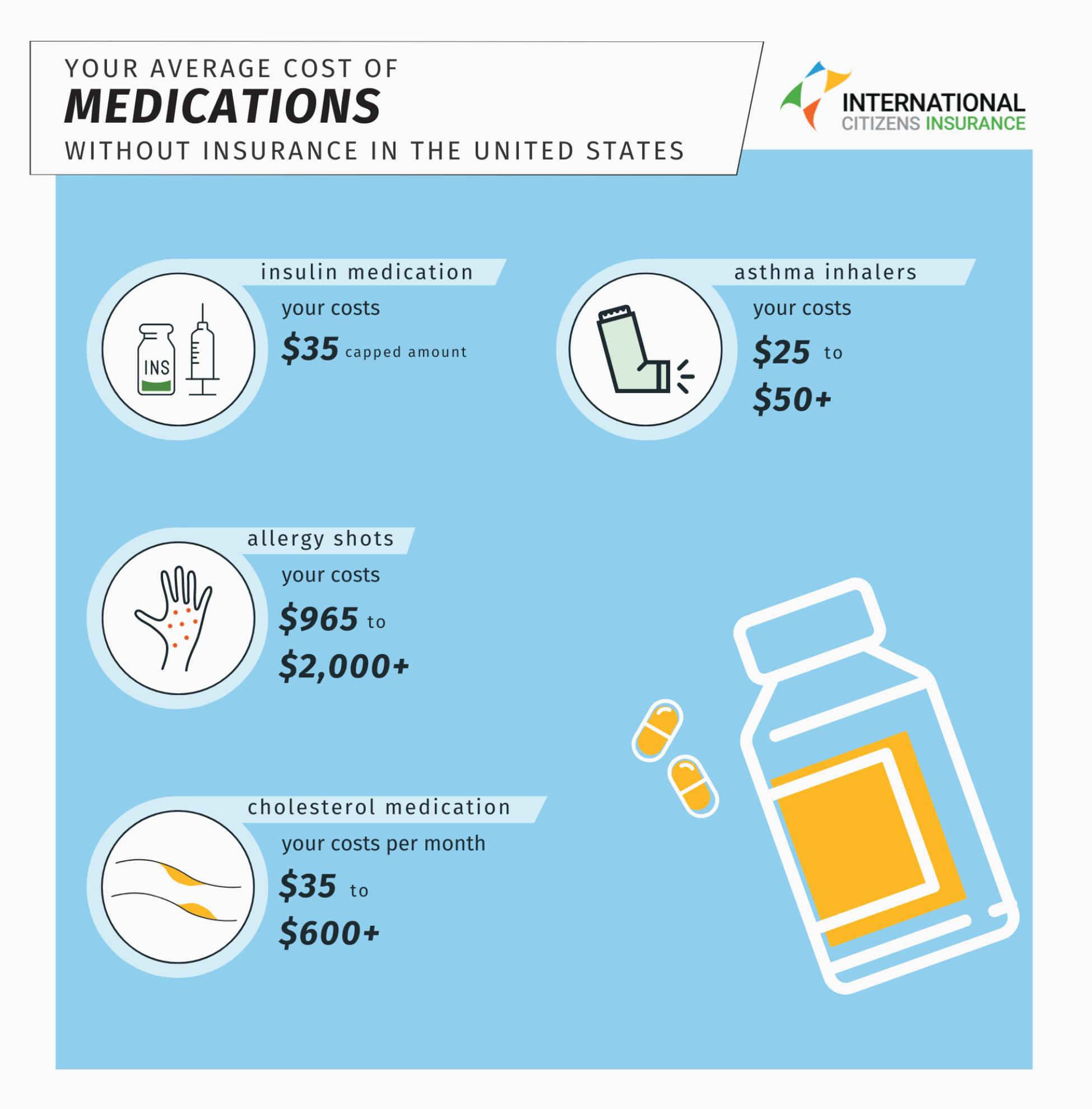
American healthcare prices are also high when it comes to prescription medication, though there have been some recent improvements. For example, insulin for diabetes is now capped at $35 per month, even without coverage. Following a price hike crisis, the cost of asthma inhalers is also more controlled, with prices ranging from $25 to $50.
However, prices for other medications can still vary widely depending on several factors. For instance, cholesterol medication may cost between $35 and $600 per month, while a year’s worth of allergy shots can range from $965 to over $2,000.
Prescription drugs can take up a large part of a patient's budget, which is why many insurance plans include coverage for these costs.
How Much Does It Cost to Have a Baby in America?
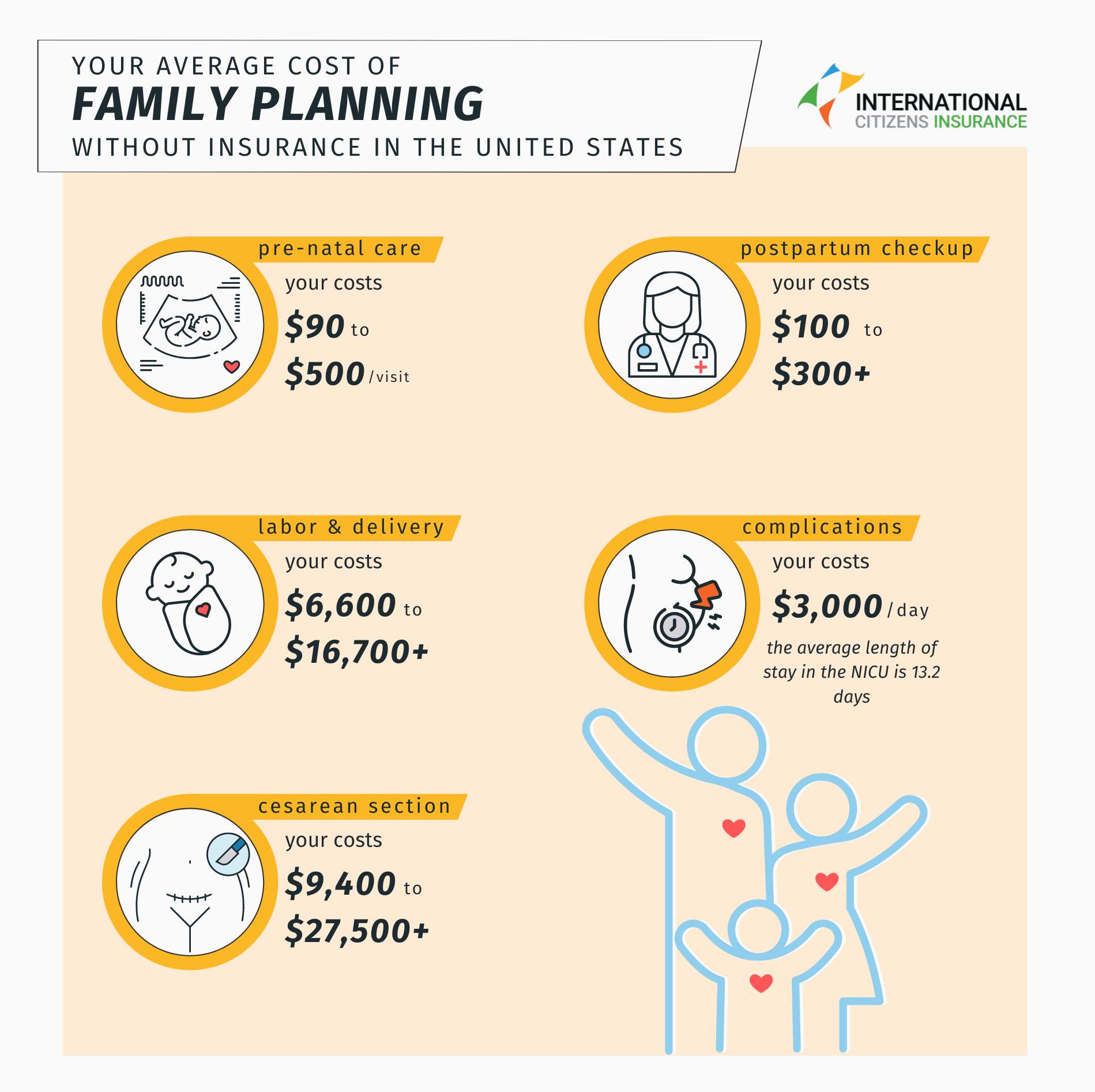
The United States is a notoriously expensive place to have a baby, and if you decide to start a family or add to it while living in the country, your healthcare costs will quickly add up.
Prenatal doctor visits generally cost between $90 and $500 each time, and you will need several of them throughout your pregnancy. Labor and delivery alone can cost anywhere from $6,600 to $16,700 – and that’s for a vaginal delivery. A cesarean section, whether planned or emergency, is more expensive, ranging from $9,400 to $27,500 or more.
If there are complications and your baby needs a stay in the NICU, you can expect to pay around $3,000 per day without coverage. Given that the average NICU stay in the U.S. is 13.2 days, this could result in a staggering total bill of $39,600.
Postpartum checkups have similar costs to prenatal ones, ranging from around $100 to $300 per visit. Overall, pregnancy and childbirth in the U.S. are very costly, so having health coverage is crucial.
How Much Does Surgery Cost Without Insurance?
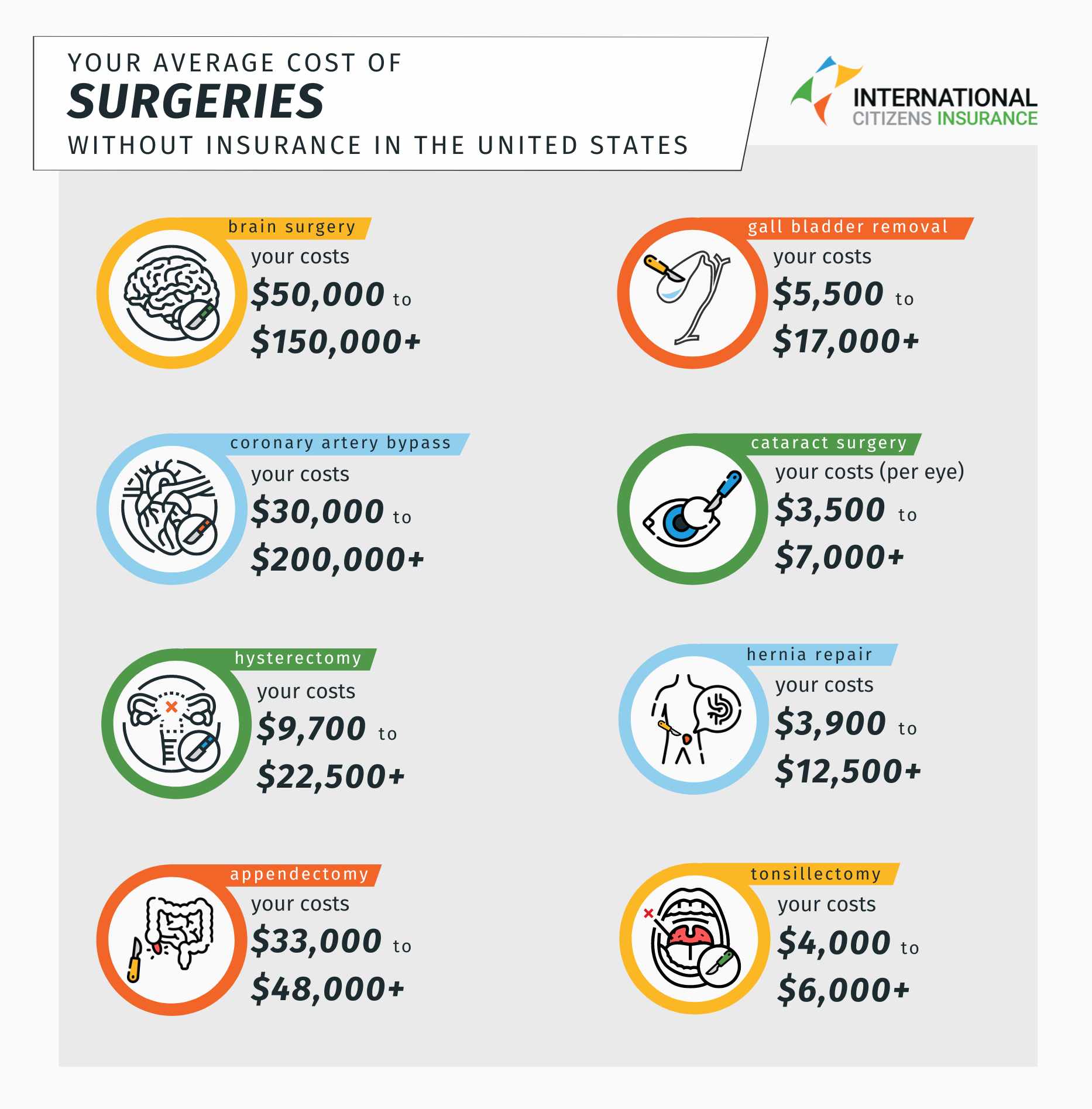
Whether you need emergency surgery like an appendectomy or elective surgery for cataracts, the costs in the U.S. are incredibly high. While it can be hard to pin down the exact figures, as they vary depending on a range of circumstances and fees, an appendectomy usually costs between $33,000 and $48,000 or more. Meanwhile, cataract surgery can cost between $3,500 and $7,000 or more per eye.
More common procedures, such as a tonsillectomy, are somewhat cheaper, costing between $4,000 and $6,000. If you need your gallbladder removed, you can expect to pay at least $5,500. However, factors such as your metro area and the complexity of the surgery can push that cost up to as much as $17,000.
A hysterectomy can be even more costly, ranging from $9,700 to $22,500 or more. As you might expect, a specialized and life-saving procedure like a coronary artery bypass can cost anywhere from $30,000 to over $200,000.
What Is the Cost of Treating Broken Bones and Sprains?
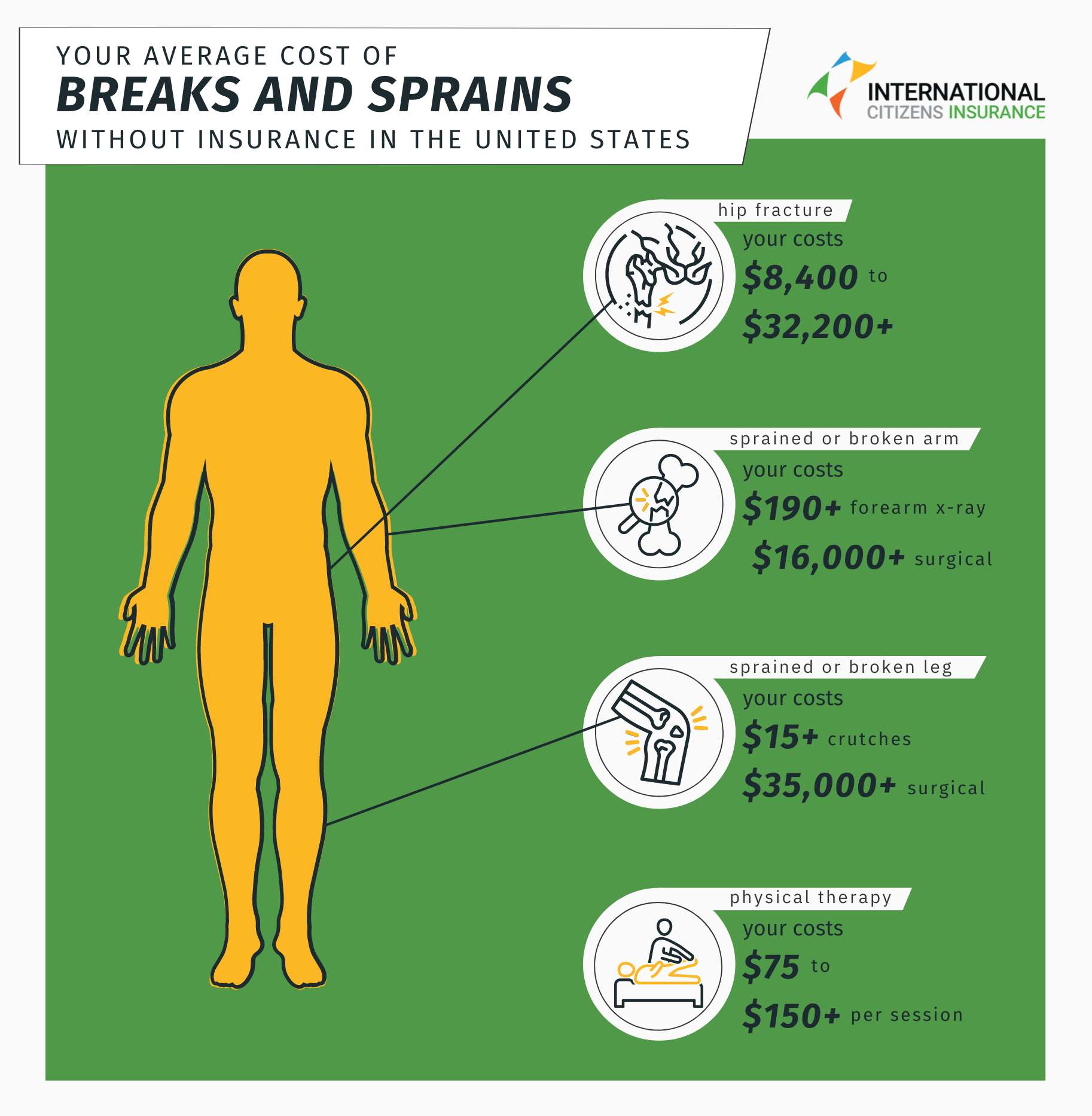
It could be anything from a simple fall on the sidewalk to a serious sports injury. Whatever the scenario, breaks and sprains can happen at any time and can be very expensive to treat in the U.S. if you don’t have adequate coverage.
Like other types of medical care, costs can vary widely depending on where you are, how badly you’ve been hurt, and the type of treatment you need. If you sprain or break your arm, you could pay anywhere from $190 for a forearm X-ray to $16,000 or more for surgery.
A leg or ankle sprain may set you back as little as $15 for a set of crutches, but major surgery for a severe fracture can exceed $35,000. Breaking your hip can end up costing you between $8,400 and $32,200. And even after the bones heal, you’ll probably need some physical therapy to regain full function, with each session averaging $75 to $150 or more.
How Much Is a Doctor Visit Without Insurance?
A visit to a doctor's office is relatively affordable in the U.S. However, if you are ill, additional costs can quickly add up. This might include fees for diagnostic tests, procedures, and follow-up visits.
An initial consultation with a primary care doctor generally ranges from $100 to $200. Specialist visits are typically more expensive, with consultations averaging $250 or more, depending on the specialty and the nature of your visit.
Costs can vary significantly based on whether you have health coverage and the specifics of your plan. For urgent issues, urgent care centers can offer a more affordable option than emergency rooms, with visits generally costing between $150 and $300.
How Can You Cover Your Medical Costs in the U.S.?
As a frugal traveler or expat, you might be asking yourself what you can do to reduce your healthcare costs without sacrificing quality or convenience.
Firstly, remember that common over-the-counter medications and first aid supplies are widely available and very affordable in the United States. For example, you can find headache medication, mild heartburn medication, muscle cream, sinus decongestants, and skin ointments for under $25, with some items costing as little as $5. Consulting a pharmacist is also free, and they can offer valuable advice on treating minor, non-urgent, conditions.
Secondly, make sure that you have adequate travel insurance or health coverage while you are in the U.S. As you've seen above, if you fall ill while visiting the country, a relatively uncomplicated problem like an inflamed appendix can cost several times more than the trip itself. Similarly, as an expat, you may face significant medical expenses without proper coverage, which can lead to financial strain and unexpected burdens.
With the right plan, you can avoid worrying about facing a serious health problem and being hit with staggering medical bills afterward. Proper coverage will also prevent you from being overwhelmed by high costs in an emergency, which is stressful enough to deal with.
Find the Best International Travel Insurance
- Get multiple quotes and coverage options
- Travel Medical, Trip Cancellation & more options available
What Is the Cost of Medical Care in the U.S. With Insurance?
If you never go to the doctor, you won't face these high medical costs, and some people feel comfortable taking that risk. However, for most people, the risks are too significant. For expats in the US, buying international health insurance is the best way to offset that risk.
Although a plan requires you to pay a fixed monthly premium, even if you don’t visit the doctor, it is well worth it for the peace of mind it provides. It ensures that you are covered for medical services outlined in your policy, such as doctor visits and hospital stays, up to the specified limits and conditions.
How Does Health Insurance Work?
A high-quality health plan will cover all your costs, minus a deductible (the amount you pay before coverage kicks), an excess (the additional amount you may need to pay), and/or co-pay (a fixed amount you pay for a covered service such as a doctor's office visit after you've met your deductible).
Plans with higher deductibles and co-pays generally have lower monthly premiums. This means you'll pay less each month but more out-of-pocket when you use medical services. On the flip side, plans with lower deductibles and co-pays usually have higher monthly premiums, meaning you pay more each month but less when you use medical services.
Read More: Deductibles, Co-Pay and Out of Pocket Maximums
Depending on the plan you choose, it may cover all your medical costs without any limit. However, some plans put a cap on how much they will pay for your medical expenses, which is known as a medical maximum . Plans with a lower medical maximum generally have lower monthly premiums, but in exchange, you will take on more risk because if your medical bills exceed the cap, you'll be responsible for paying the extra costs yourself.
Due to all these factors, the cost of health coverage in America can vary significantly. An international health insurance plan will cost more than a travel medical insurance plan because it offers more extensive medical coverage. On average, our clients pay about $500 per month for a comprehensive global medical plan. While this may seem high, it's often more affordable than paying a $10,000 medical bill out of your own pocket.
Health and Travel Insurance Plans for Foreigners in the U.S.
There are a variety of coverage options available for foreigners in the United States, depending on their circumstances.
If you are planning to relocate to the country, you can opt for a global medical plan that provides basic coverage for common ailments or a more comprehensive plan that covers a wider range of services. You can also choose from several tiers to meet your needs and budget.
If you are visiting the U.S., there are a range of plans designed to cover emergency medical expenses if you get sick or injured and need hospital care. These options provide excellent value, offering peace of mind at a cost far lower than the potential risk of incurring large medical bills.
You can find more detailed information about these plans in our articles on US health insurance for non-citizens and safety and travel insurance for the U.S .
If you are moving to the United States, planning a trip to the country, or need coverage for any reason, our team of licensed brokers can help you research, compare, and purchase the right plans for your needs and budget. We offer some of the best international health insurance , travel medical insurance , group insurance , and travel insurance policies to people from all around the world.
So why not get in touch and get a quote now?
Looking for International Travel & Medical Insurance?
Request a free quote and we'll guide you through the process.
*Disclaimer: The information shown in these infographics was last updated in August 2024. The data is intended to aid decision-making. Medical costs and charges are subject to change at any time and can vary significantly by geographic location and insurance plan.


Expat Insurance: Health, Life, and Travel Insurance

Visitors Insurance Coverage

US Health Insurance for Non-Citizens
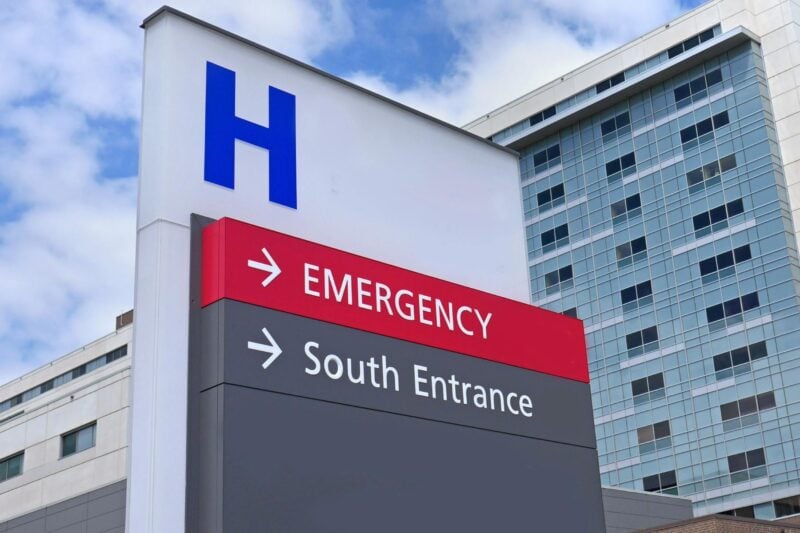
Safety and Travel Insurance for the USA
Author: Joe Cronin , Founder and President of International Citizens Insurance . Mr. Cronin, a former expat, is an authority in the areas of international travel, and global health, life, and travel insurance, with expertise in advising individuals and groups on benefits for today's global workforce. Follow him on LinkedIn or Twitter .
Get a fast, free, international insurance quote.
Global medical plans, specialty coverage, company info, customer service.
- Bladder, kidney and urinary system
- Bones and joints
- Brain and nerves
- Ear, nose and throat
- Emergencies and first aid
- Food and water borne diseases
- Immune system
- Infectious diseases
- Sexually transmitted infections (STIs)
- Stomach and bowel
- Treatments and surgeries
- Tests and procedures
- Women's health
- National Immunisation Schedule
- Vaccines given in Aotearoa
- When to immunise
- Book a vaccine
- Catching up on missed immunisations
- Preparing for a vaccination appointment
- Immunising your whānau
- Benefits of immunisation
- Vaccine side effects, reactions and safety
- How vaccines work
- Assault and abuse
- Cancer screening
- Environmental health
- Green Prescriptions
- Healthy habits
- Healthy weight BMI calculator
- Active older people
- Popular diets review
- Sexual health
- Teeth and gums
- Transgender and gender diversity
- Finding out you are pregnant
- Pregnancy and immunisations
- During pregnancy
- Labour and birth
- Breastfeeding
- The first 6 weeks
- The first year
- Caring for tamariki under 5
- Food and choking
- Well Child Tamariki Ora
- Childhood illnesses
- Mental health conditions
- Mental health services
- Alcohol and drug addiction
- Mental health medication
- Auckland (West and North Shore)
- Auckland (Central)
- Auckland (East and South)
- Bay of Plenty
- Rotorua and Taupō
- Hawke's Bay
- Manawatū-Whanganui
- Wellington and Hutt Valley
- Nelson Marlborough
- South Canterbury
- Otago and Southland
- Find the right healthcare for you and your whānau
- Services: Rights, privacy and complaints
- Alcohol and drug services
- Healthcare providers
- Health websites and apps
- Publicly funded health and disability services
- Pregnancy, birth and children services
- Support services
Ngā whare rata kaupapa whānui General practices
Everyone should sign up (enrol) with a general practice to get help with all their health needs. Unless it is an emergency, your general practice should be your first point of contact for health advice and care. Find out what they do and how to enrol.
On this page
What general practices do
Choose your general practice, māori health providers, your medical records, what you will pay, fees and subsidies, changing your general practice.
General practice teams can:
- provide treatment when you are unwell
- provide treatment and health advice for long-term conditions
- treat injuries
- help with wellbeing and mental health conditions
- prescribe medicines and give injections
- perform minor surgery
- refer you to other health professionals when necessary and work with them to look after you
- give lifestyle advice to help keep you well
- give immunisations.
Team members
General practices teams vary between general practices and can include:
- Qualified doctors trained in general practice.
- Practice nurses — registered nurses who provide nursing care, give treatment and advice.
- Clinical nurse specialists — expert nurses with special skills and knowledge in a specific clinical area, such as diabetes. They can prescribe some medicines
- Nurse practitioners — registered nurses with advanced education and clinical training. You may see a nurse practitioner instead of a GP. They can order tests, prescribe some medicines and treat you
- Counsellors and social workers
- Health improvement practitioners and health coaches.
They may also include allied health professionals such as:
- occupational therapists
- optometrists
- osteopaths.
In Aotearoa New Zealand, you can choose the doctor or general practice that you visit.
You can search Healthpoint for general practices. You can filter your search based on their hours, location, services and if they are enrolling new patients.
- GPs — Healthpoint (external link)
You can search the Medical Council's register to find out whether a doctor is currently registered and is able to practise in New Zealand, as well as other public information.
Register of doctors — Medical Council of New Zealand (external link)
Sometimes a general practice will not take on new patients. If this happens, they should refer you to their public health office (PHO) for help finding another practice. The PHO may put you on a waitlist, and arrange for you to get care in the meantime. You can also search Healthpoint PHOs.
- Primary health organisations — Te Whatu Ora (external link)
Māori health provider services are whānau-centred and sit within a kaupapa Māori framework. Providers support you to access and choose culturally relevant approaches to support your wellbeing. The services Māori health providers offer may include:
- Whanau Ora (family health)
- Well Child Tamariki Ora (child health)
- general practitioner services
- Māori community nursing
- rangatahi (youth health services)
- mental health
- disability support services
- health promotion and education.
Find a Māori health provider and the services they offer near you.
Kaupapa Māori — Healthpoint (external link)
It is free to enrol with a general practice. But they may charge a consultation fee each time you go to see them after that.
General practices normally charge a higher fee if you are not enrolled with their practice. This is often called a casual rate.
If you enrol with a general practice your care will be subsidised. This means you will pay a reduced consultation fee.
General practices can only enrol you if you are eligible for publicly funded health services. When you enrol you may be asked to show proof. This could include a passport or birth certificate. You will be asked to sign an enrolment form.
Eligibility for publicly funded healthcare — Health New Zealand (external link)
Your medical record is kept with the general practice you are enrolled with. But any health professional involved in your care can look at your record. You can ask to look at your record at any time.
Your rights and privacy (internal link)
General practices are private businesses. They set their own fees for visits and other health services they provide.
The cost of a visit will be lower if you are enrolled with the practice. This is because the Government subsidises the fee for enrolled patients.
For a list of practices and their fees, check the website of your local primary health organisation.
Primary health organisations — Health New Zealand (external link)
If you are seeing your general practice about an injury caused by an accident, you will be charged a lower fee if it is covered by ACC.
Treatment we can help pay for — ACC (external link)
General practices are usually open business hours, Monday to Friday. There is a requirement that arrangements are put in place for patients to get care outside of these hours
Check with your practice where you should go if you do need care outside working hours. You might have to visit an after hours accident and medical clinic or another practice.
Call Healthline for free health advice from registered nurses, 24 hours a day. Phone 0800 611 116
If you have a long-term health condition or a terminal illness, you may be eligible for Care Plus.
General practices get extra Government funding for Care Plus patients. This means the practice can provide additional care at no further cost to you.
Care Plus — Health New Zealand (external link)
If you are visiting a general practice where you are not enrolled, you will pay less if you have a Community Services Card.
If you have a card and are enrolled with a general practice you will also get cheaper visits. This also includes visits relating to injuries at most practices, which are covered by ACC.
More information is available on the Work and Income website. To check if you can get a card you can also call 0800 559 009
Community Services Card — Work and Income (external link)
You are entitled to free essential care during and after your pregnancy if your pēpi is born in Aotearoa New Zealand.
Services and support during pregnancy — Ministry of Health (external link)
General practices can charge a fee for services provided outside of a consultation. This includes repeat prescriptions or referral letters to a specialist.
Your doctor may refer you to a hospital or specialist doctor for further assessment or diagnosis.
- Specialist care is free through the public health system, but you may go on a waiting list.
- If you want to get specialist advice quickly, you may wish to use a private hospital or specialist. You will have to pay a fee for this, unless you have private health insurance.
Some general practices join a Very Low Cost Access programme run by their primary health organisation. This means they get extra Government funding to keep their fees at low levels for all enrolled patients.
All tamariki aged 13 and under are eligible for free general practice visits. This includes visits during the day and after hours. Not all general practices provide free visits, so check with your general practice first.
Zero fees for tamariki under 14 (internal link)
When you enrol with a new general practice, you will be asked to sign a form so your records can be transferred from your old practice.
A practice should not refuse to enrol you unless they already have too many patients.
A practice can end your enrolment if there is an ‘irreparable breakdown’ in the relationship.
If you want to make a complaint about the care you get from your general practice contact either the:
- Health and Disability Commissioner (external link)
- New Zealand Medical Council (external link)
MSP General Practice Fee Code Guide

- Consultations
- Complete Examination
- Other GPSC Fee Codes/Incentives
- Call Outs & Continuing Care
- Other Types of Various GP Visit Fee Codes
- General Practice Group Medical Visit (GMV Fee Codes)
- Community Based GP Hospital Visits
- Community Based GP with Active Hospital Privileges
- Long-Term Care Facility Visits
- Emergency Visits
- Miscellaneous Visits (MAiD GP Fee Codes)
- Mental Health Planning & Management
- GP Telehealth Fee Codes
- Gynecology
- Infant Care
- Surgical Assistance
- Minor Procedures Performed by GP
- Tests Performed in a Physician’s Office
- Operative Surcharges
- Final Takeaway:
If you’re an GP practising in British Columbia you may have noticed the vast amount of fee codes available to use.
Knowing which fee codes are available is an important aspect of billing correctly. Since there’s so many codes available, it’s not uncommon for GPs to undercode simply because they aren’t aware of what they can use.
Whether you’re a new physician just starting out, or you’re a seasoned physician used to billing, bookmark this page for a quick overview of all GP codes – along with tips on how to bill them properly. If you’re looking for a printable version to keep on your desktop scroll to the bottom!
When seeing a patient for the first time you’d bill a consultation or a complete examination.
You can only claim a consultation when it’s been specifically requested by the attending practitioner – basically this means that on every consultation claim you need to have a referring physician. Consultation fee codes are billed in age groups and whether the patient was seen in or out of the office.
In Office GP Consultation Fee Codes
12110 Consultation – in office: (age 0-1)
00110 Consultation – in office: (age 2 – 49)
15310 Consultation – in office (age 50 – 59)
16110 Consultation – in office: (age 60 – 69)
17110 Consultation – in office: (age 70 – 79)
18110 Consultation – in office: (age 80+)
Out of Office GP Consultation Fee Codes
12210 Consultation – out of office (age 0 – 1)
13210 Consultation – out of office (age 2 – 49)
15210 Consultation – out of office (age 50 – 59)
16210 Consultation – out of office (age 60 – 69)
17210 Consultation – out of office (age 70 – 79)
18210 Consultation – out of office (age 80+)
Special in hospital consultation
00116 : Special in hospital consultation
00116 applies to consultations done on in-hospital patients of an acute or extended care (or when the patient is in the ER with a complex problem as outlined below and a decision has been made to admit).
- It needs to be referred to you by a certified specialist (FRCP, FRCS or CCFP-EM) for advice about and/or the continuing care of complex problems for which the management is complicated and requires extra consideration. Examples of such problems include (but are not restricted to) the assessment of terminal illness, the planning of activation/rehabilitation programs and the management of patients with AIDS.
- Not applicable for transfer of care.
- Not applicable if the patient has been attended to by you or a physician in the same group in the last 6 months.
Complete Examination
When you do not have a referral from another physician or healthcare practitioner, you’d bill a complete examination.
A complete examination needs to include a complete detailed history and detailed physical examination of all parts and systems. In the history you should include complaints, history of present and past illness, family history, personal history, functional inquiry, physical examination, differential diagnosis, and provisional diagnosis.
The fee codes for complete examinations are billed by age group and whether they are seen in or out of the office.
In Office GP Complete Examination Fee Codes
12101 Complete examination – in office (age 0-1)
00101 Complete examination – in office (age 2-49)
15301 Complete examination – in office (age 50 – 59)
16101 Complete examination – in office (age 60-69)
17101 Complete examination – in office (age 70-79)
18101 Complete examination – in office (age 80+)
Out of Office GP Complete Examination Fee Codes
12201 Complete examination – out of office (age 0-1)
13201 Complete examination – out of office (age 2-49)
15201 Complete examination – out of office (age 50-59)
16201 Complete examination – out of office (age 60-69)
17201 Complete examination – out of office (age 70-79)
18201 Complete examination – out of office (age 80+)
Consults and Complete Examination Reminder
You can only bill for a consult or a complete examination once every 6 months. If you happen to see the patient again within the 6 months you need to add a note in the note field of the claim telling MSP what the medical necessity was and why you had to see them again. MSP will then review the claim and decide if it’s eligible or not.
Visits differ from a consultation or complete examination because consults/exams require a full history and complete exam while a visit requires a partial or regional exam. For example, when you see a new patient you’d give a full examination but when you’re seeing a regular patient for a complaint (like a cold, headache, etc.) you’d bill a visit. You can bill visit fee codes for any condition requiring partial or regional examination and history. This includes both initial and subsequent examination for the same/or related condition.
Visit fee codes are also billed by age groups and whether they are seen in the office or out of office:
GP In Office Visit Fee Codes
12100 Visit – in office (age 0-1)
00100 Visit – in office (age 2-49)
15300 Visit – in office (age 50-59)
16100 Visit – in office (age 60-69)
17100 Visit – in office (age 70-79)
18100 Visit – in office (age 80+)
GP Out of Office Visit Fee Codes
12200 Visit – out of office (age 0-1)
13200 Visit – out of office (age 2-49)
15200 Visit – out of office (age 50-59)
16200 Visit – out of office (age 60-69)
17200 Visit – out of office (age 70-79)
18200 Visit – out of office (age 80+)
Counselling Fee Codes
Counselling fee codes are billed in age groups as well as where the visit takes place. In order to be eligible to bill a counselling fee code you need to spend at least 20 minutes with the patient.
GP In Office Counselling fee codes
12120 Individual counselling – in office (age 0-1)
00120 Individual counselling – in office (age 2-49
15320 Individual counselling – in office (age 50-59)
16120 Individual counselling – in office (age 60-69
17120 Individual counselling – in office (age 70-79)
18120 Individual counselling – in office (age 80+)
GP Out of Office Counselling fee codes
12220 Individual counselling – out of office (age 0-1)
13220 Individual counselling – out of office (age 2-49)
15220 Individual counselling – out of office (age 50 – 59)
16220 Individual counselling – out of office (age 60-69)
17220 Individual counselling – out of office (age 70-79)
18220 Individual counselling – out of office (age 80+)
GP Group Counselling fee codes
00121 Group counselling first full hour 00122 Group counselling second hour
GPSC Annual Bonuses
Management fees provide funding for Family Physicians to identify, manage and improve care of patients. They help compensate for the additional work that goes beyond the office visit. 14033 Annual complex care management fee
14050 Gp annual chronic care bonus – diabetes mellitus
14051 Gp annual chronic care bonus – heart failure
14052 Gp annual chronic care bonus – hypertension
14053 Incentive for gp annual chronic care bonus copd
14250 Annual chronic care incentive(encounter)-diabet
14251 Annual chronic care incentive(encounter)-heart
14252 Annual chronic care incentive(encounter)-hypert
14253 Annual chronic care incentive(encounter)-copd
GPSC Attachment Fees
The GPSC Portal Codes (14070 and 14071) are zero value codes that you need to submit at the beginning of each year if you’re a full-service family physician (or a locum who will cover a full-service family physician). Billing the portal codes signifies that you’re providing full-service family practice service to your patients and you will do so for the entire year. Without billing the portal codes you won’t have access to the other GP incentive codes listed below.
Portal Codes
14070 attachment participation
14071 locum attachment participation
Incentive Codes
14074 unattached complex/high needs patient attachment 14075 attachment complex care management fee
14076 attachment telephone management fee
14077 attachment patient conference fee
If you’ve billed the portal codes through Dr.Bill before, our billing agents will automatically resubmit them for you. If you haven’t you need to follow these steps: How to submit the GPSC Portal code (14070)
Use diagnostic code 780 and the following program “Patient” demographic information:
PHN#: 975 303 5697
Patient Surname: Portal
First name: GPSC
Date of Birth: January 1, 2013
Once processed by MSP, this will then allow access to 14075 , 14076 , 14077 , 14078 and 14029 for the balance of that calendar year.
How to submit the GPSC Portal code for Locums (14071 )
The GPSC Locum Portal code (14071) may be submitted by the GP who provides locum coverage for Family Physicians who have submitted 14070. This code will still need to be submitted at the beginning of each calendar year or prior to providing the locum coverage. In order to submit 14071, you’ll need to follow the same exact steps as above.
Other GPSC Fee Codes/Incentives
14063 Palliative care planning fee
14066 Personal health risk assessment 14010 Maternity Network Incentive The Maternity Network incentive covers the costs of group/network activities for the shared care of obstetric patients (both assigned and unassigned obstetric patients): $2,100 per quarter ending March 31, June 30, September 30 and December 31. To bill the quarterly Maternity Network incentive you need to create a claim with the following information:
Billing amount: $2,100
PHN: 982487052
Patient last name: Maternity
Patient first name/initial: G
Date of birth: November 2, 1989
Diagnostic code: V26
For date of service use: Last day in a calendar quarter
Billing schedule: Last day of the month, per calendar quarter
14086 GP assigned inpatient care network The Assigned In-patient Network payment is an incentive for family physicians who provide in-patient care services for their own and colleagues’ patients (assigned).
This incentive is billed quarterly and you need to register for it in order to claim it. You can fill the registration form out electronically through Dr.Bill, otherwise you need to print it out and mail it to MSP: Assigned In-patient Care Network Registration form
14088 Unassigned inpatient care fee The GP inpatient care network incentive is if you’re actively participating in the GP Unassigned Inpatient Care or the GP Maternity Networks. It’s billable in addition to the visit fee code ( 00109 , 13109 , 13008 , 00127 , 14088 ) or the delivery fee and is a lump sum incentive based on the annual volume of unassigned inpatients.
Before you receive the incentive you need to be a member of the Assigned Inpatient Care Network, which means you need to register for it. You can fill this form out electronically through Dr.Bill, otherwise you need to print it out and mail it to MSP: Unassigned In-Patient Incentive
Call Outs & Continuing Care
A call out is a premium added when you are called from outside of the hospital to come and care for a patient.
During weekdays the call must be placed prior to 8:00am or after 6:00pm. On weekends the call must be placed after 8:00am.
REMINDER: If you’re called during regular weekday hours you’d bill an emergency visit instead , which covers both the visit and the surcharge.
To apply this premium to your time, fill out a claim logging your consult or visit with the patient. Then, at the bottom of the claims toggle the ‘Call Out’ button. Don’t forget to enter the Call Time, Start Time & End Time for your encounter. Our mobile app will automatically apply the correct Out of Office premiums to your claim.
Continuing Care
If you have logged a Call Out charge and then continue to see additional patients you would be entitled to bill continuing care surcharges for each 30 minutes after the initial 30 minutes you spent with the patient you were initially called to see.
If you see multiple patients in a 30 minute block you would only log the continuing care on the last patient in that block but for the entire 30 minute period. You must also note CCFPP in the MSP note field to tell MSP that these patients were seen following your initial call out to the hospital.
Continuing Care Rules
Timing begins after the first 30 minutes for consultations, visits or anesthetic evaluations. Payment is based on one half-hour of care or major portion thereof (at least 15 mins.). This means that your first continuing care surcharge is only eligible after 45 minutes of continuous care (30 mins. for the refractory period plus the major portion of 15 minutes).
Timing for the continuing care premium is based on the total time spent providing continuous care, not the number of patients you see. For example, if you see 3 patients within 30 minutes then you would only add the continuing care premium on the last patient, but for the entire 30-minute duration.
To apply these surcharges on Dr.Bill, log your consult or visit with the patient. On that claim toggle ‘Call Out & Continuing Care’. Don’t forget to enter the Call Time, Start Time & End Time for your encounter. Our app will automatically apply the correct Out of Office premiums to your claim.
Reminder: Only toggle Call-Out on the first patient, to show that it was the first. For the following claims just toggle Cont.Care. If you need to claim a call out on its own or aren’t using Dr.Bill then use the following fee codes:
Call Out Fee codes:
01200 : Evening (call placed between 6:00pm and 11:00pm and service rendered between 1800 hours and 0800 hours)
01201 : Night (call placed and service rendered between 11:00pm hours and 8:00am)
01202 : Saturday, Sunday or Statutory Holiday (call placed between 8:00am and 11:00pm)
Continuing Care Surcharge Fee Codes (n on-operative):
Billed in addition to visits and consultation fees.
01205 : Evening (service rendered between 6:00pm and 11:00pm) – per half hour or major part there of
01206 : Night (service rendered between 11:00pm hours and 8:00am) – per half hour or major part thereof
01207 : Saturday, Sunday or Statutory Holiday (Service rendered between 8:00am and 11:00pm) – per half hour or major part thereof
13070 : In office assessment of an unrelated condition(s) in association with a WorkSafe BC service
- Paid only when services are provided for an unrelated illness occurring in conjunction with a WorkSafe BC insured service.
- Unrelated service must be initiated by the patient.
- The unrelated condition(s) must justify a stand-alone visit.
- Only paid once per patient per day, and includes all other unrelated problems.
- Not paid if a procedure for the same or related condition is paid for the same patient on same day.
- The visit must be fully and adequately documented in chart.
13075 : In office assessment of an unrelated condition(s) in association with an ICBC service
- Paid only when services are provided for an unrelated illness occurring in conjunction with an ICBC insured service.
- Only paid once per patient per day, and includes all other unrelated problems.
- Not paid if a procedure for the same or related condition is paid for the same patient on the same day.
- The visit must be fully and adequately documented in the patient’s chart.
A Group Medical Visit provides medical care in a group setting. A requirement of a GMV is 1:1 interaction between each patient and the attending physician. While portions of the GMV may be delegated to other allied health providers, you need to be physically present for the majority of each session.
All GMV codes are time-based fee codes and you cannot do concurrent billing for any other services. You also cannot use any of the GMV codes if it’s only for a single patient – it must be for a group and applies only when all members of the group are receiving medically required treatment (i.e. each member of the group is a patient).
You can’t use the GP Group Medical Visits for any activities related to attempting to persuade a patient to alter their diet or other lifestyle behavioural patterns.
Group Medical Visit Fee Codes
Group medical visits are billed depending on the amount of patients you see at the same time. So for example if you are doing a group visit of 6 patients at the same time, you would bill 13766 for all six patients (bill it six times once for each patient). Level Fee per patient, per 1/2 hour or major portion thereof ( less that 30 mins but over 16 mins):
13763 Three patients
13764 Four patients
13765 Five patients
13766 Six patients
13767 Seven patients
13768 Eight patients
13769 Nine patients
13770 Ten patients
13771 Eleven patients
13772 Twelve patients
13773 Thirteen patients
13774 Fourteen patients
13775 Fifteen patients
13776 Sixteen patients
13777 Seventeen patients
13778 Eighteen patients
13779 Nineteen patients
13780 Twenty patients
13781 Greater than 20 patients (per patient)
GMV Guidelines:
- A separate claim must be submitted for each patient.
- When a patient attends a group visit, note in his or her chart, along with the start and end times.
- All Claim must include start and end times.
- A minimum of a full thirty (30) minute period and a maximum of ninety (90) minutes may be claimed per patient per day. If you go over 2 ½ hours in any 7 day period you need to leave a note in the MSP note field explaining why.
- It’s not payable with other consultation, visit or complete examination, for the same patient, on the same day.
- Concurrent billings for any other MSP services for any patient during the time interval for which the GMV fee is billed will not be paid.
- If two physicians are involved, the group should be divided for claims purposes, with each physician claiming the appropriate rate per patient for the reduced group size. So for example, if you are doing a group workshop for anti smoking with another physician and there’s 10 people in the group, you’d divide the group in half and each bill for 5 patients. In the MSP note field leave a note stating “Shared Group medical visit” and identify the other physician.
Home Visits
00103 : Home visit (between 8:00am and 11:00pm any day)
- If you see additional patients during the same house call then you’d bill them under the applicable out of office visit fee codes 12200 , 13200 , 15200 , 16200 , 17200 , 18200 ( 00103 is basically like a call out fee. So once you are there to see the first patient you are already there to see other patients and do not need to be “called in” again).
GP Facility Visit Fees
00109 : Acute care hospital admission examination
You can bill 00109 when a patient is admitted to an acute care hospital specially to receive medical care from you (the GP with active hospital privileges).
You cannot bill it when a patient has been admitted for surgery or for “continuing care” by a certified specialist.
- It’s to be applied in lieu of fee item 00108 on the first in-patient day, for that patient.
- You cannot use it if you’ve billed any of the below fee codes within a week preceding the patient’s admission 12101 , 00101 , 15301 , 16101 , 17101 , 18101 , 12201 , 13201 , 15201 , 16201 , 17201 , or 18201
- Limit of one hospital admission ( 00109 or 13109 ) payable per patient per hospitalization. This means that when a patient is admitted to the hospital for treatment only one admission fee code is payable during their entire hospitalization period. You can only bill another admission if the patient was discharged and then readmitted.
00108 : Hospital visit
Billable if you have active hospital privileges. Use it for daily attendance on the patients you have most responsibility for.
- Essential emergent or non-emergent additional visits to a hospitalized patient can be billed under fee item 00108 . The claim must include the time of each visit and a statement of need included in a note record.
00128 : Supportive care hospital visit
00127 : Palliative care patient facility visit
- You can bill this as long as it’s doesn’t exceed 180 days prior to death and your patient is in an acute care hospital, nursing home or palliative care patient facility.
- You cannot bill t he chemotherapy fee codes at the same time, it’s one or the other. ( 33581 , 33582 , 33583 , 00578 , 00579 , and 00580 )
Guidelines for 00109 , 00108 , 00128 , 00127
- For weekday, daytime emergency bill 00112 .
- If you’re called back to the hospital during the evening, night time or weekend because your patient’s condition has changed you could bill 12200 , 13200 , 15200 , 16200 , 17200 , 18200 .
- If you’re already on-site and called for emergent care, then bill 00113 , 00105 or 00123 . The claim must include the time of service and an explanation for the visit included in the MSP note field.
- If you need additional visits to a hospitalized patient then bill 00108 . You need to leave a note in the MSP note’s field explaining why there was a need for additional visits.
Community Based GP Hospital Visits
The following eligibility rules apply to all community based GP hospital visit fees.
- Only palpable if you’re a GP with an active family practice in the community, and you accept the role of being Most Responsible Physician (MRP) for the longitudinal coordinated care of your patients.
- You won’t get paid for any community based visits if you’ve been paid for any specialty consultation fee in the previous 12 months.
- For weekday daytime emergency visit, bill 00112 . For evening, night time or weekend emergency visits bill 12200 , 13200 , 15200 , 16200 , 17200 , 18200 .
- If you’re on-site and called for emergent care, bill 00113 , 00105 or 00123 . The claim must include the time of service and an explanation for the visit included in the MSP note field.
- Essential non-emergent additional visits to a hospitalized patient for diagnosis unrelated to the admission diagnosis, during one day, are to be billed under fee item 00108 or 13008. The claim must include the time of each visit and note in the MSP note field explaining why.
Community Based GP with Active Hospital Privileges
Active privileges means you have the authority to write orders, whereas courtesy/associate privileges means you’d only be allowed to write progress notes in charts, but not orders.
13109 : Community based GP: Acute care hospital admission examination with active hospital privileges.
- It’s to be applied in lieu of fee item 13008 on the first in-patient day, for that patient.
- You cannot use it if you’ve billed any of the below fee codes within a week preceding the patient’s admission 12101 , 00101 , 15301 , 16101 , 17101 , 18101 , 12201 , 13201 , 15201 , 16201 , 17201 , or 18201 .
- Limit of one hospital admission ( 00109 or 13109 ) payable per patient per hospitalization.
13338 : Community based GP, first facility visit of the day bonus, extra (active hospital privileges) (for routine, supportive or palliative care)
- Paid only if 13008 , 13028 , 00127 are paid on the same day.
- You can only bill this once a day, regardless of the number of facilities attended.
- Not payable on the same day for same physician as 13339 as 13339 is also a first of the day bonus.
13008 : Community based GP: hospital visit (active hospital privileges)
13028 : Community based GP: supportive care hospital visit (active hospital privileges)
- If you’re the referring physician you can charge one hospital visit for each day hospitalized during the first days of hospitalization and thereafter one visit for every 7 days hospitalized. A written record of the visit must appear in either the patient’s hospital or office chart.
Community Based GP with Courtesy or Associate Hospital Privileges
13339 : Community based GP, first facility visit of the day bonus, extra, (courtesy/associate privileges)
- Only payable if 13228 paid the same day.
- Limit of one payable for the same physician, same day, regardless of the number of facilities attended.
- Not payable same day for same physician as 13338 .
13228 : Community based GP: hospital visit (courtesy/associate privileges)
You can use 13228 for patients in acute, sub-acute care or palliative care.
- It’s only payable once per calendar week per patient up to the first 4 weeks. Thereafter, payable once per two weeks up to a maximum of 90 days. For visits over 90 days you’ll need to add a note in the MSP note field explaining why.
- Not payable with any other visit fee including 00108 , 13008 , 00109 , 13109 , 00114 , 00115 , 00113 , 00105 , 00123 , 00127 , 12200 , 13200 , 15200 , 16200 , 17200 , 18200 , 12201 , 13201 , 15201 , 16201 , 17201 , 18201 , 00128 , 13028 , 13015 , 12220 , 13220 , 15220 , 16220 , 17220 , 18220 , 00121 , 00122 , 12210 , 13210 , 15210 , 16210 , 17210 , 18210 , 00116 , 00112, 00111 .
- If you’re on-site and called for emergent care, you can also bill 00113 , 00105 or 00123 .
- If a hospitalist or GP member of an Unassigned In-Patient Care Network, is providing GP care to the patient, the community based GP with courtesy or associate hospital privileges may bill 13228 . If you’re a GP with active hospital privileges at a hospital other than the one where the patient is admitted you can still bill 13228 .
On-call On-site Hospital Visits
The following fee codes should be used when you’re currently in the hospital or Emergency Department and are called to see a patient in either the Emergency Department or elsewhere in the hospital.
00113 : On Call, on Site Hospital Visit Evening (between 6:00pm hours and 11:00pm hours)
00105 : On Call, on Site Hospital Visit Night (between 11:00pm hours and 8:00am hours)
00123 : On Call, on Site Hospital Visit Saturday, Sunday or Statutory Holiday
If you see the patient between weekday working hours, so between 8:00am and 6:00pm, then you’ll bill a visit or procedure fee code .
Reminder: Out-of-office hours premiums are not chargeable in addition to emergency department fees. Claim must state time call placed. All claims need to have the start and end times, with the start time being the time you were called.
Long-Term Care Facility Visits
00114 : One or multiple patients, per patient
13334 : Community based GP, long term care facility visit – first visit of the day bonus, extra
- Paid only if 00114 is paid on the same day.
- Limit of one payable for the same physician, same day, regardless of the number of long term care facilities attended.
00115 : Nursing home visit – one patient.
Use 00115 when you’re called in to see a patient and you see them between 8:00am and 11:00pm. The visit has to take place within 24 hours of the call otherwise you’re not eligible to bill it.
When you’re called to the hospital to see a patient urgently during office hours you would bill the emergency visit fee code:
00112 Emergency visit (call placed between hours of 8:00am and 6:00pm) – weekdays
- You can only use 00112 if you must immediately leave where you are to go see the patient. If you’re called to the hospital emergency department while at hospital, bill for an on-call on-site hospital visit or procedure.
- Make sure you add start and end times.
00111 : An emergency home (or scene of accident) visit for an acutely ill or injured patient immediately followed by a trip to hospital to arrange for emergency admission and to include immediate associated hospital visit.
MAiD stands for Medical Assist in Dying. When billing for MAiD claims you always need to review your patient’s medical records, document the patient encounter (visit) and complete the required Assessor or Prescriber forms (the Assessor Form is the HLTH 1633 form and Prescriber Form is the HLTH 1634 form.
13501 : MAiD Assessment Fee – Assessor Prescriber
Includes all requirements of a MAiD assessment including review of medical records, patient encounter and completion of the MAiD Assessment Record (Prescriber).
You can give the assessment in person or by video conference, per 15 minutes or greater portion thereof (l ess that 15 mins but over 8 mins).
- Maximum payable is 135 minutes (9 units). Services which exceed the maximum will be given independent consideration only if you leave an explanatory note in the MSP note field.
- You must enter the start and end times in both the billing claim and patient’s chart. Additionally, start and end time for the patient encounter must be entered in the patient’s chart.
13502 : MAiD Assessment Fee – Assessor
Includes all requirements of a MAiD assessment, including review of medical records, patient encounter and completion of the MAiD Assessment Record (Assessor).
You can give the assessment in person or by video conference, (l ess that 15 mins but over 8 mins).
- Maximum payable is 105 minutes (7 units). Services which exceed the maximum will be given independent consideration only if you leave an explanatory note in the MSP note field.
- Not payable with 13501 by same physician.
13503 : Physician witness to video conference MAiD Assessment – Patient Encounter
You must be in personal attendance with your patient for the duration of the patient encounter with the Assessor or Assessor Prescriber.
You can only bill for the time spent witnessing the patient – Assessor encounter. 13503 includes the
completion of any required documentation and is for 15 minutes or greater portion thereof (l ess that 15 mins but over 8 mins).
- You must enter the start and end times in both the billing claim and patient’s chart.
- Not payable with 13501 or 13502 by the same physician.
13504 : MAiD Event Preparation and Procedure
- Payable only to Assessor Prescriber.
- 13504 includes all necessary elements: establishment of IV, administration of meds, pronouncement of death.
- It also includes pharmacy visits for procedures provided in facilities with on-site pharmacies.
- You can bill 13505 in addition for procedures provided in facilities with no on-site pharmacy.
- A same day visit fee is payable in full in addition under fee item 00103 (home) or out of office visit fee items 12200 , 13200 , 15200 , 16200 , 17200 , and 18200 (all other locations).
- Fee items 00108 , 13008 , 00127 and 00114 are not payable.
13505 : MAiD Medication Pick-up and Return
- Paid only in addition to 13504 .
- Payable only when MAiD procedure takes place in a location where there is no on-site pharmacy.
- Not payable when time for medication pick-up and return has been compensated under a different payment modality (for example, paid through third party insurance) .
13015 : HIV/AIDS Primary Care Management – in or out of office – per half hour or major portion thereof ( less that 30 mins but over 16 mins).
- When performed in conjunction with a visit, counselling, consultations or complete examinations, only the larger fee is billable.
- You can only use it when using diagnostic codes 042 (HIV Disease), 043 (HIV Infection Causing) and 044 (HIV with Infection).
- Services that are less than 15 minutes duration should be billed under the appropriate visit fee item instead.
- You have to add in the start and end times in both the billing claims and the patient’s chart.
14043 Mental health planning fee 14044 Mental health management fee age 2-49
14045 Mental health management fee age 50-59
14046 Mental health management fee age 60-69
14047 Mental health management fee age 70-79
14048 Mental health management fee age 80+
Billing for Telehealth is essentially the same as how you’d submit regular MSP claims, except you select a Telehealth fee code instead of a regular MSP fee code and all Telehealth fee codes are categorized by age.
You can easily find Telehealth fee codes by quickly searching through our app using the keyword ‘Telehealth.’ Our app syncs with MSP codes so it’s always up-to-date.
Additionally, MSP has introduced temporary billing changes to expand Telehealth services during the pandemic. For an overview of the changes take a look at our COVID-19 billing guide .
Telehealth Consultations
13236: Telehealth GP Consultation (age 0-1)
13436: Telehealth GP Consultation (2-49)
13536: Telehealth GP Consultation (50-59)
13636: Telehealth GP Consultation (60-69)
13736: Telehealth GP Consultation (70-79)
13836: Telehealth GP Visit (80+)
Telehealth Visit Fee Codes
13237: Telehealth GP Visit (age 0-1)
13437: Telehealth GP Visit (2-49)
13537: Telehealth GP Visit (50-59)
13637: Telehealth GP Visit (60-69)
13737: Telehealth GP Visit (70-79)
13837: Telehealth GP Visit (80+)
Telehealth Counselling Fee Codes
13238: Telehealth GP Individual Counselling for a prolonged visit for counselling (age 0-1)
13438: Telehealth GP Individual Counselling for a prolonged visit for counselling (age 2-49)
13538: Telehealth GP Individual Counselling for a prolonged visit for counselling (age 50-59)
13638: Telehealth GP Individual Counselling for a prolonged visit for counselling (age 60-69)
13738: Telehealth GP Individual Counselling for a prolonged visit for counselling (age 70-79)
13838: Telehealth GP Individual Counselling for a prolonged visit for counselling (age 80+) Counselling Notes:
- MSP will pay up to 4 individual counselling visits (any combination of age appropriate in office or out of office).
- You have to add start and end times need to be recorded on your claim (and in your patients chart).
Telephone Advice & Email
13000 : Telephone advice to a Community Health Representative in First Nations Communities
- You can use this fee code for calls if you were called for medical advice from a Community Health Representative.
- You cannot bill it if a Community Health Nurse is available in the Community.
13005 : Advice about a patient in Community Care
- You cannot claim 13005 in addition to visits or other services provided on the same day for the same patient with the exception of 14076 .
- You can use this fee code for any advice you give via telephone, fax or in written form about a patient in community care. The advice has to have been initiated by an allied health care worker specifically assigned to the care of the patient.
- Community Care comprises Residential, Intermediate and Extended care and includes patients receiving Home Nursing care, Home support or Palliative care at home.
- Allied health care workers are defined as: home care coordinators, nurses, (registered, licensed practical, public health, and psychiatric), psychologists, mental health workers, physiotherapists, occupational therapists, respiratory therapists, social workers, ambulance paramedics, and pharmacists (including completion of faxed medication review with orders, up to twice per calendar year, but not for simple prescription renewal).
- Include the start time on your claim as the time when the advice was received.
- You cannot bill this for advice in response to enquiries from a patient or their family.
- It can be billed to a maximum of one per patient per physician per day.
14018 Urgent telephone conference with a specialist
14022 GP with Specialty Training Tele Patient Management 1 week
14023 GP with Specialty Training Tele Patient Management Follow up
14079 GP Telephone/email Management fee
14010 Maternity Network Incentive (as outlined above).
14090 : Prenatal visit – complete examination
14091 : Subsequent examination
- Uncomplicated prenatal care usually includes a complete examination followed by monthly visits to 32 weeks, then visits every second week to 36 weeks, and weekly visits thereafter to delivery. In complicated pregnancies, charges for additional visits will be given independent consideration upon explanation (so remember to leave a note when submitting additional visits).
- When a patient transfers her total on-going uncomplicated prenatal care to another physician,
- the second physician also may charge a complete examination (item 14090 ) and subsequent examinations, as needed. If you’re the second doctor – make sure you include a note explaining the reason for the transfer.
- Other than during prenatal or postnatal visits, you should charge separately for all visits (including counselling) for conditions unrelated to the pregnancy. If this happens, again make sure to leave a note.
- Other than procedures, services for the care of unrelated conditions, during a prenatal or postnatal visit are included in the prenatal ( 14091 ) or postnatal visit fee ( 14094 ), and are not to be billed under 04007 .
14094 : Postnatal office visit
- 14094 may be billed in the 6 weeks following delivery (vaginal or Caesarean Section).
- You cannot claim this if you’re the physician performing the Caesarean Section (usually done the OB). If it’s an emergency c-section the postnatal care is included in the fee code for procedure 14109 . If elective, bill 14108 .
14199 : Management of prolonged second stage of labour, per 30 minutes or major portion thereof.
- This item is billable in addition to the delivery fee only when the second stage of labour exceeds two hours in length.
- Not payable with 04000 , 04014 , 04017 , 04018 , or 04085 .
- Timing ends when constant personal attendance ends, or at the time of delivery.
- Start and end times must be entered in both the billing claims and the patient’s chart.
14104 : Delivery and postnatal care (1-14 days in-hospital)
- Don’t forget to bill for the care of newborn in hospital ( 00119 ) if you’re also caring for the newborn.
- If you had to repair the cervix it’s not included in 14104 . You’d bill the repair ( 04502 ) separately and it’d be paid at 50% when done on the same day as delivery.
- When medically necessary you can bill for additional post-partum office visit under 14094 .
14105 : Management of labour and transfer to higher level of care facility for delivery
This can also be claimed if you’re the referring physician if you intended to conduct the delivery providing the following conditions are met:
- You attended to the patient during active labour and provided assessment of the progress of labour, both initial and ongoing.
- Active labour is defined as:”regular painful contractions, occurring at least once in five minutes, lasting at least 40 seconds, accompanied by either spontaneous rupture of the membranes, or full cervical effacement and dilatation of at least two centimetres.”
- There is a documented complication warranting the referral such as foetal distress or dysfunctional labour (failure to progress).
- If you has to transfer the patient to another facility. iii) Not payable with assessment or visit fee or 14104 , 14109 and generally 14199 (provide a detailed note if claiming for 14199 in addition).
- OOOHP Continuing Care Surcharges do not apply to maternity services in the first stage of labour only.
- When medically necessary you can bill for additional post-partum office visit under 14094 .
14108 : Postnatal care after elective caesarean section (1-14 days in-hospital)
14109 : Primary management of labour and attendance at delivery and postnatal care associated with emergency caesarean section (1-14 days in hospital)
14108 & 14109 Guidelines
- Surgical assistant isn’t included and you can bill extra for this.
14545 : Medical abortion
- Includes all associated services provided on the same day as the abortion, including the consultation whenever given, required components of Rh factor, associated services including counselling rendered on the day of the procedure, and any medically necessary clinical imaging.
15120 Pregnancy test, immunologic – urine
1 4004 Full service gp-obstet delivery bonus -w delivery
14005 Full service gp-bonus with transfer higher care
14008 Full service gp-bonus with post natal care
14009 Full service gp-obstet delivery bonus-w c section
Gynecology
14540 : Insertion of intrauterine contraceptive device (operation only – it includes Pap smear if required).
14541 : Removal of intrauterine device (IUD) -operation only
- Not payable with a pap smear ( 14560 ) or IUD insertion ( 14540 ).
14560 : Routine pelvic examination including Papanicolaou smear (no charge when done as a pre and postnatal service)
Services billed under this code must include both a pelvic examination and Pap smear ( 14560 ) .
Infant Care
00118 : Attendance at caesarian section (if specifically requested by surgeon for care of baby only)
- Not payable if a paediatrician is present at the caesarean section to care for the baby.
00119 : Routine care of newborn in hospital
Urology
13655 GP vasectomy bonus associated with bilateral vasectomy
- Maximum of 25 bonuses per calendar year
- Payable only when fee item 08345 billed in conjunction
- You can only bill this bonus once per vasectomy/per patient.
Surgical Assistance
13194 : First Surgical Assist of the Day
- Maximum, of one per day payable in addition to 00195 , 00196 , 00197 or 00193 .
Surgical Assistance fee codes:
00195 : less than $317.00 inclusive
00196 : $317.01 to 529.00 inclusive
00197 : over $529.00
00198 : Time, after 3 hours of continuous surgical assistance for one patient , each 15 minutes or fraction thereof (at least 8 minutes).
- In those rare situations where an assistant is required for minor surgery then make sure the surgeon notes it in their planning/charting/OR report.
- If you assist at two operations in different areas performed by the same or different surgeon(s) under one anesthetic, you may charge a separate assistant fee for each operation, except for bilateral procedures, procedures within the same body cavity or procedures on the same limb.
- Visit fees are not payable with surgical assistance on the same day, unless each service is performed at a distinct/separate time. If this is the case make sure you leave start and end times on all your claims to prove they took place at various times.
00193 : Non-CVT-certified surgical assistance at open-heart surgery , per quarter hour or major portion thereof
- The same fee applies equally to all assistants (first, second, etc.).
- Start and end times must be entered in both the billing claims and the patient’s chart.
Anesthesia
13052 : Anesthetic evaluation – non-certified anesthesiologist
00190 : Forms of treatment other than excision, X-ray, or Grenz ray; such as removal of haemangiomas and warts with electrosurgery, cryotherapy, etc.- per visit (operation only)
- You can claim this only if you not a dermatologist.
- The treatment of benign skin lesions for cosmetic reasons, including common warts (verrucae) is not covered by MSP.
13660 : Metatarsal bone – closed reduction (operation only)
13600 : Biopsy of skin or mucosa (operation only)
13601 : Biopsy of facial area (operation only)
- Punch or shave biopsies which do not require sutures are not to be charged under fee items 13600 or 13601 .
13605 : Opening superficial abscess, including furuncle – operation only
13610 : Minor laceration or foreign body – not requiring anesthesia – operation only
- Intended for primary treatment of injury.
- You can’t claim this for dressing changes or removal of sutures.
- Applicable for steri-strips or glue to repair a primary laceration .
13611 : Minor laceration or foreign body – requiring anesthesia – operation only
13612 : Extensive laceration greater than 5 cm (maximum charge 35 cm) – operation only – per cm
13620 : Excision of tumour of skin or subcutaneous tissue or small scar under local anesthetic – up to 5 cm (operation only)
13621 : additional lesions removed at the same sitting (maximum per sitting, five) each (operation only)
13623 : Excision of tumour of skin or subcutaneous tissue or small scar under local anesthetic – face (operation only)
13624 Removal of extensive scars – 5 cm or more – per cm over 5 cm (in addition to 13623 or 13620 )
- Payment for scar revision is based on length of scar, not length of incision.
- Make sure you leave a note in the MSP note field for any scars that are greater than 30cm.
13622 : Localized carcinoma of skin proven histopathologically (operation only)
13630 : Paronychia – operation only
13631 : Removal of nail – simple operation only
13632 : with destruction of nail bed (operation only)
13633 : Wedge excision of one nail (operation only)
13650 : Enucleation or excision of external thrombotic hemorrhoid (operation only)
10710 : In office Anoscopy
- Use this for evaluating patients with anal and/or peri-anal symptoms (pain or bleeding), or used as an adjunct to the DRE.
- Not payable in addition to 00715 , 00716 , 00718 , 10714 , 10731 , 10732 or 10733 .
Tests Performed in a Physician’s Office
The following tests are only payable when performed in your office. These tests are not payable to laboratories, vested interest laboratories and/or hospitals.
00012 : Venepuncture and dispatch of specimen to an approved laboratory facility, when no other blood work performed
- This is the only fee code available for taking blood specimens. You can only use it when a single bloodwork service is needed.
- You can only claim 00012 if after taking the test you send it to another physician’s office or a laboratory (i.e., only when you do not perform another laboratory procedure using blood collected at the same time.
- When billed with another service, such as an office visit, 00012 may be billed at 100%.
15132 : Candida Culture
15133 : Examination for eosinophils in secretions, excretions and other body fluids
15134 : Examination for pinworm ova
15136 : Fungus, direct microscopic examination, KOH preparation
15100 : Glucose – semiquantitative (dipstick analysed visually or by reflectance meter)
15137 : Hemoglobin cyanmethemoglobin method and/or haematocrit
15000 : Hemoglobin – other methods
15110 : Occult blood – feces (applies only to guaiac methods).
15120 : Pregnancy test, immunologic – urine
30015 : Secretion smear for eosinophils
15138 : Sedimentation rate
15139 : Sperm, Seminal examination for presence or absence
15140 : Stained smear
15141 : Trichomonas and/or Candida and/or Bacterial Vaginosis direct microscopic examination
15130 : Urinalysis – Chemical or any part of (screening)
15131 : Urinalysis – Microscopic examination of centrifuged deposit
15142 : Urinalysis – Complete diagnostic, semi-quant and micro
15143 : White cell count only (see the Laboratory Services Payment Schedule for additional information)
The following test is payable in a physician’s office (when performed on their own patients) and/or on a referral basis:
93120 E.C.G. tracing, without interpretation, (technical fee)
Investigation
00117 : Interpretation of electrocardiogram by non-internist
No Charge Referral
03333 : Use this code when submitting a claim for a “no charge referral.
Operative surcharges are percentage based premiums that are billed in addition to any surgical procedure. As a GP you’re eligible to bill for any surgical procedures that aren’t restricted to a specific specialty. You can add the Operative surcharges for emergency surgery or elective surgery that were bumped by an emergent surgery resulting in the elective surgery to be completed during out of office hours.
You can only claim them for surgeries that require general, spinal or epidural anesthesia and/or lasting at least 45 minutes.
- 01210: Evening (6:00pm to 11:00pm) – 44.49% of surgical (or assistant) fee
- 01211 : Night (11:00pm to 8:00am) – 71.42% of surgical (or assistant) fee
- 01212 : Saturday, Sunday or Statutory Holiday (Service rendered between 8:00am and 11:00pm) – 44.49% of surgical (or assistant ) fee
Remember you have the option of “ starring ” your most commonly used billing codes . That way, they’ll appear at the top for searching.
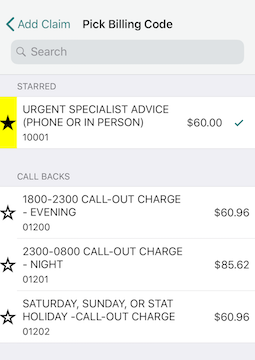
This article offers general information only and is not intended as legal, financial or other professional advice. A professional advisor should be consulted regarding your specific situation. While information presented is believed to be factual and current, its accuracy is not guaranteed and it should not be regarded as a complete analysis of the subjects discussed. All expressions of opinion reflect the judgment of the author(s) as of the date of publication and are subject to change. No endorsement of any third parties or their advice, opinions, information, products or services is expressly given or implied by RBC Ventures Inc. or its affiliates.
Related posts:
Msp rejection examples and tips to fix them.
- Modifications for MSP Claims
- BC Retroactive Payments

Read our Latest Blog Post

Related Blog

Article Contents
Share this post, learn more about, 7 addiction medicine billing codes available in bc.
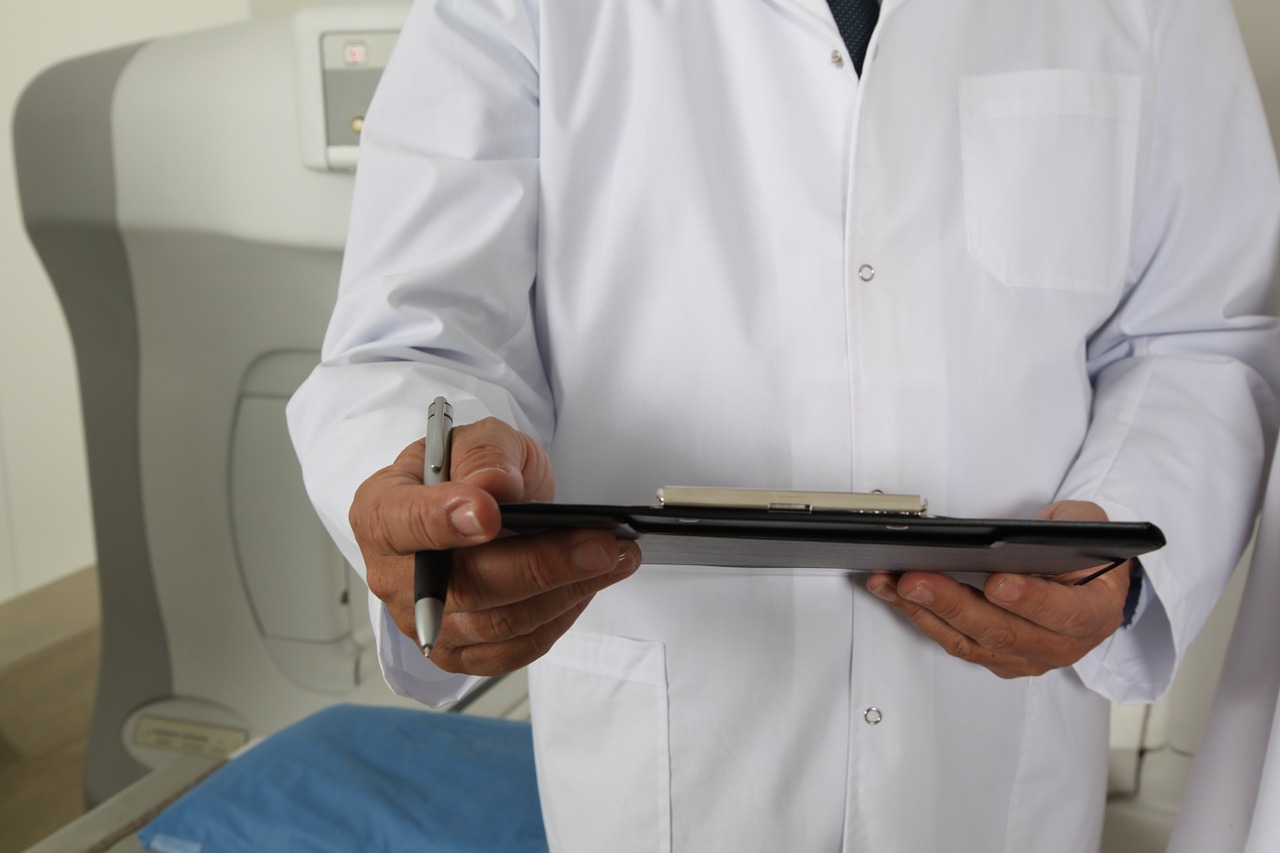
10 years in business. $5 billion in claims. 100% committed to improving the lives of physicians.
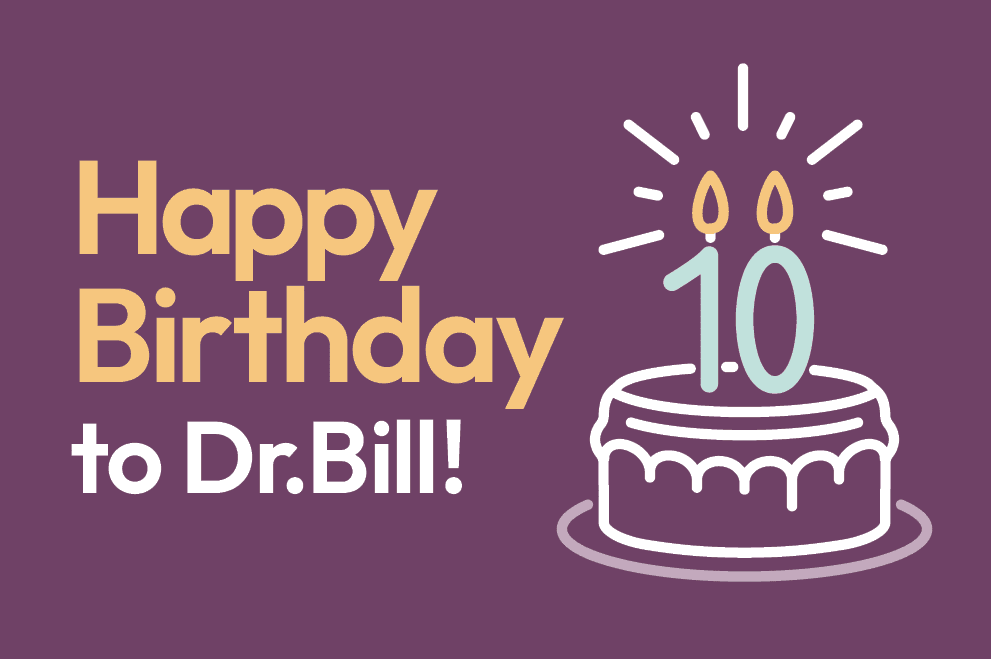
The Ins and Outs of Becoming an International Doctor in Canada

Get the latest industry updates, billing tips and more direct to your inbox.
We use cookies to improve your website experience.
Same MDBilling.ca you know. Now part of the Dr.Bill suite.
Already an MDBilling.ca client?
It’s business as usual and you’ll still be using the same product you’ve come to know and trust for your medical billing. Click here to sign in to your MDBilling.ca account as you normally would.

Looking for MDBilling.ca?
You’re in the right place! Dr.Bill and MDBilling.ca have come together to make it even easier to find the right codes, submit claims and get paid.
- Skip to main content
- Keyboard shortcuts for audio player
- Your Health
- Treatments & Tests
- Health Inc.
- Public Health
The Coronavirus Crisis
Patients are being billed for some phone chats with doctors that used to be free.
Jay Hancock

Despite recent changes in insurance policy, some patients say doctors and insurers are charging them upfront for video appointments and phone calls — not just copays but sometimes the entire cost of the visit, even if it's covered by insurance. sesame/Getty Images hide caption
Despite recent changes in insurance policy, some patients say doctors and insurers are charging them upfront for video appointments and phone calls — not just copays but sometimes the entire cost of the visit, even if it's covered by insurance.
Karen Taylor had been coughing for weeks when she decided to see a doctor in early April. The number of COVID-19 cases had just exceeded 5,000 in Texas, where she lives.
Cigna, her health insurer, said it would waive out-of-pocket costs for telehealth patients seeking coronavirus screening through video conferences. So Taylor, a sales manager, talked with her physician on an Internet video call.
The doctor's office charged her $70. She protested. But "they said, 'No, it goes toward your deductible and you've got to pay the whole $70,' " she says.
Policymakers and insurers across the United States say they are eliminating copayments, deductibles and other barriers to telemedicine for patients confined at home who need to consult a doctor for any reason.

Shots - Health News
How to get the most out of your virtual medical appointment.
My Telehealth Podcast
"We are encouraging people to use telemedicine," New York Gov. Andrew Cuomo said last month after ordering insurers to eliminate copays, which are typically collected from the patient at the time of a doctor visit, for telehealth sessions.
But in a fragmented health system — which encompasses dozens of insurers, 50 state regulators and thousands of independent doctor practices ― the shift to cost-free telemedicine for patients is going far less smoothly than the speeches and press releases suggest. In some cases, doctors are billing for telephone calls that used to be free.
Patients say doctors and insurers are charging them upfront for video appointments and phone calls — and not just copays but sometimes the entire cost of the visit, even if it's covered by insurance.
Despite what politicians have promised, insurers said they were not able to immediately eliminate telehealth copays for millions of members who carry their cards but receive coverage through self-insured employers . Executives at telehealth organizations say insurers have been slow to update their software and policies.
"A lot of the insurers who said that they're not going to charge copayments for telemedicine ― they haven't implemented that," says George Favvas , CEO of Circle Medical, a San Francisco company that delivers family medicine and other primary care via livestream. "That's starting to hit us right now."
One problem is that insurers have waived copays and other telehealth cost sharing for in-network doctors only. Another is that Blue Cross Blue Shield, Aetna, Cigna, UnitedHealthcare and other carriers promoting telehealth have little power to change telemedicine benefits for self-insured employers whose claims they process.
Such plans cover more than 100 million Americans — more than the number of beneficiaries covered by the Medicare program for seniors or by Medicaid for low-income families. All four insurance giants say improved telehealth benefits don't necessarily apply to such coverage. Nor can governors or state insurance regulators force those plans, which are regulated federally, to upgrade telehealth coverage.

Psychiatrists Lean Hard On Teletherapy To Reach Isolated Patients In Emotional Pain
Many employer plans are starting to eliminate cost sharing , such as copays and deductibles, now that federal regulators have eased the rules for certain kinds of plans to improve telehealth benefits, says Brian Marcotte, CEO of the National Business Group on Health, a coalition of very large, mostly self-insured employers.
For many doctors, business and billings have plunged because of the coronavirus shutdown. New rules notwithstanding, many practices may be eager to collect telehealth revenue immediately from patients rather than wait for insurance companies to pay, says Sabrina Corlette , a research professor and co-director of the Center on Health Insurance Reforms at Georgetown University.
"A lot of providers may not have agreements in place with the plans that they work with to deliver services via telemedicine," she says. "So these providers are protecting themselves upfront by either asking for full payment or by getting the copayment."
David DeKeyser, a marketing strategist in Brooklyn, N.Y., sought a physician's advice via video after coming in contact with someone who attended an event where coronavirus was detected. The office charged the whole visit — $280, not just the copay ― to his debit card without notifying him.
"It happened to be payday for me," DeKeyser says — a week earlier and the charge could have caused a bank overdraft. An email exchange got the bill reversed, he says.
With wider acceptance, telehealth calls have suddenly become an important and lucrative potential source of physician revenue. Medicare and some commercial insurers have said they will pay the same rate for video calls as for office visits.
Some doctors are charging for phone calls that were once considered an incidental and nonbillable part of a previous office visit. Blue Cross plans in Massachusetts, Wyoming, Alabama and North Carolina are paying for phoned-in patient visits, according to America's Health Insurance Plans, a lobbying group.
"A lot of carriers wouldn't reimburse telephonic encounters" in the past, Corlette says.
Catherine Parisian, a professor in North Carolina, says what seemed like a routine follow-up call with her specialist last month became a telehealth consultation with an $80 copay.
"What would have been treated as a phone call, they now bill as telemedicine," she says. "The physician would not call me without billing me."
She protested the charge and said she has not been billed yet.
By many accounts, the number of doctor encounters via video has soared since the Department of Health and Human Services said in mid-March that it would take "unprecedented steps to expand Americans' access to telehealth services."
Medicare expanded benefits to pay for most telemedicine nationwide instead of just for patients in rural areas and other limited circumstances, HHS says. The program has also temporarily stopped requiring doctors to charge patients a copay at the time of the visit.
At the same time, the CARES Act, passed by Congress last month to address the COVID-19 emergency, allows private, high-deductible health insurance to make an exception for telehealth in terms of cost sharing. Such plans can now pay for video doctor visits even if patients haven't met the deductible.
Dozens of private health insurers listed by AHIP say they have eliminated patients' copays and other cost sharing for telemedicine. Cigna, however, has waived only some out-of-pocket costs — the costs of telehealth appointments associated with COVID-19 screening. Cigna did not respond to requests for comment.
Teladoc Health, a large, publicly traded telemedicine company, said its volume has doubled to 20,000 medical visits a day since early March. Its stock price has nearly doubled, too, since Jan. 1.
With such a sharp increase, it's not surprising that insurers and physicians are struggling to keep up, says Circle Medical CEO Favvas.
"It's going to be an imperfect process for a while," he says. "It's understandable, given that things are moving so quickly."
Abbie VanSickle, a California journalist, wanted her baby's scheduled wellness visit done remotely because she worried about visiting a medical office during a pandemic. Her insurer, UnitedHealthcare, would not pay for it, the pediatrician told her. Mom and baby had to come in.
"It seems like such an unnecessary risk to take," VanSickle says. "If we can't do wellness visits, we're surely not alone."
A UnitedHealthcare spokesperson says that there was a misunderstanding and that the baby's remote visit would be covered without a copay required of VanSickle.
Jacklyn Grace Lacey, a New York City medical anthropologist, had a similar problem. She had to renew a prescription a few weeks after Cuomo ordered insurers to waive a patient's share of the cost for telehealth appointments.
The doctor's office told her she needed to come in for a visit or book a telemedicine appointment. The video visit came with an "administrative fee" of $50 that she would have had to pay upfront, she says — five times what the copay would have been for an in-person session.
"I was not going to go into a doctor's office and potentially expose people just to get a refill on my monthly medication," she says.
Patients should check with their insurer before any telehealth visit to make sure telemedicine is covered by their health policy, Corlette says. If your employer plan doesn't pay for telemedicine or requires a copay, check with your company's human resources department. The company might change that policy if it is self-insured, as most large employers are.
"If you know of coworkers in the same boat, encourage them to ask HR as well," she says. "HR may pay more attention if the request comes from multiple sources."
Kaiser Health News is a nonprofit, editorially independent program of the Kaiser Family Foundation. KHN is not affiliated with Kaiser Permanente.
- Health Insurance
- coronavirus testing
Scheduled maintenance
myGov will be unavailable on Saturday 24 August 2024 between 12:00am and 12:30am AEST and on Sunday 25 August 2024 between 12:00am and 6:00am AEST for system maintenance. \n
During this time, you will not be able to sign in to myGov to access your linked services or use the myGov app. \n
You've been on this page for at least 10 minutes.
For your security, we'll sign you out of myGov in 5 minutes.
Help paying for your GP or specialist
If you're enrolled in Medicare , some of your costs of seeing a general practitioner (GP) or specialist may be covered by Medicare.
Make sure you take a valid Medicare card or number with you when you see them.
If your GP chooses to bulk bill, Medicare will cover the full cost and you won’t need to pay.
You can search for a GP who bulk bills using the Service Finder on the healthdirect website.
After you’ve paid for the GP or specialist visit, you can claim your Medicare benefit either:
- at the doctor or specialist’s office
- in your Medicare online account through myGov.
Claiming Medicare benefits at the doctor’s
If you pay the full cost of your appointment, you can make a claim for the amount Medicare covers. The quickest way to claim is at the doctor’s straight after you pay. \r\n
To do this you need both of these:
- to be enrolled in Medicare
- your Medicare card.
When you pay at the doctor’s, ask if they can make an electronic claim for you. If they can, they’ll do it on the spot. Once it’s processed, your Medicare benefit will be paid into either:
- the account for the EFTPOS card you used to pay
- the bank account you’ve registered with Medicare.
Claiming Medicare benefits through myGov
You can claim your Medicare benefit in your Medicare online account through myGov.
If your Medicare account is linked to myGov, sign in now and make a Medicare claim.
If you pay the full cost of your appointment, you can make a claim for the amount Medicare covers. The quickest way to claim is at the doctor’s straight after you pay.
If you don’t have a myGov account, find out how to create one and link to Medicare . \r\n
Medicare will pay your benefit into the bank account you’ve registered with them.
Find out more about claiming your Medicare benefit through myGov and updating your bank account details to get your payment .
Find out about other ways to claim your Medicare benefit on the Services Australia website.
If you don’t have a myGov account, find out how to create one and link to Medicare .
Find out more about claiming your Medicare benefit through myGov and updating your bank account details to get your payment .
Thank you for your feedback
Irish Links
Moving to Ireland
Doctors Fees and Prescription Charges
If you live in Ireland and do not have a medical card or a GP Visit Card , you are considered a private patient if you visit your GP. This means that you must pay for the services provided.
Under 8’s and over 70’s now get free GP services in Ireland. (As long as the GP has signed up to the free GP scheme) Free GP care for under 8s was due to begin in September 2020 but it was delayed until July 2023
How Much Does it Cost to See a Doctor in Ireland?
There are no set fees or charges in Ireland for GP services. A typical GP visit fee is €60 – some charge as much as €80 some may charge as little as €40. There is no regulation of GP fees – and the Dept of Public Expenditure doesn’t seem to know what the average GP fee is. It was estimated in, 2019 , that GPs in Ireland received in the region of €200m-€220m per year from patients without medical cards or GP visit cards. (About 2.8 million people.)
There are lots of other things they will charge for too such as sick notes, vaccinations ECG , blood tests You should confirm charges with your GP when you register as they can vary all over the country.
Some doctors / medical centres will also charge €20 or €25 for a repeat prescription.
Most of the above charges will be free to those patients with a medical card or GP visit card.
Medical cards
- A medical card is available to people on a low income or whose circumstances enable them to qualify for one.
- A single person under 66 taking home less than €304 a week (after tax, USC) will qualify for a GP Visit Card. A couple with 2 children under 16 will qualify for a GP visit card if their net income is less than €555 a week (€28,860 a year).
- There are also allowances for reasonable expenses incurred in respect of childcare costs and rent/mortgage payments. Visit Medicalcard.ie for full details and applications.
Visitors from the UK
UK nationals travelling to Ireland can obtain emergency healthcare at a GP or hospital for free . All they need to provide is evidence of residence in the UK , such as a driver’s licence, passport etc. Brexit has not affected this.
Prescription Charges
Charges for medicines on a prescription in ireland are no longer free if you have a medical card..
Prior to January 2013 Medical Card holders in Ireland didn’t have to pay anything for prescriptions.
Prescription Fees 2023
- For medical cardholders under 70 the charge is €1.50 for each item. capped at a maximum of €15 per month.
- For people aged over 70 , the prescription charge is €1.00 per item. This is capped at a maximum of €10 per month for prescribed medicines.
Without a medical card you will pay for the actual cost of the drugs plus a dispensing fee and the pharmacist’s mark-up. There is a limit to what you will be expected to pay – which is €80 per month for a family . ( Drugs Payment Scheme) .
You need to register for this scheme – your pharmacist should be able to help you do this.
Long Term Illnesses
People in Ireland who suffer from certain long-term conditions, who are not medical card holders, may obtain prescriptions covering the treatment of that condition – free of charge.
Illnesses and condition covered ;
* Intellectual disability , Mental illness (for people under 16 only) * Diabetes insipidus * Diabetes mellitus * Haemophilia * Cerebral palsy * Phenylketonuria * Epilepsy * Cystic fibrosis * Multiple sclerosis * Spina bifida * Muscular dystrophies * Hydrocephalus * Parkinsonism * Acute leukaemia * Conditions arising from use of Thalidomide
If you qualify, you will get a long-term illness book. This book lists the drugs and medicines for the treatment of your condition, which will be provided to you free of charge. Other drugs and medicines not related to the specified condition must be paid for in the normal way.
Aussies hit with new price hike as cost of GP visits on the rise
As the cost of living pressures increase, Aussies are noticing price hikes impacting a new sector – and it is a service that almost everyone relies on.

Why $100,000 a year isn’t enough anymore

Dire warning for ‘stagnant’ Aussie jobs

Major bank slashes fixed interest rates
Many are already feeling the pain from the rising cost of living, now, some Aussies are noticing a new sector is being hit by price hikes.
Australians are dealing with a slew of rising costs, including food, fuel, rent and mortgage repayments, just to name a few.
Now, people are being warned to brace for increased fees during their next GP visit, with many practices across the country already bumping up their prices.
The rising costs of providing quality care coupled with inadequate Medicare rebates means many GP’s have been left with no other option but to pass the costs onto patients.
In a notice sent out to patients on May 31, Caringbah Family Practice in Sydney’s south revealed it could no longer keep absorbing the extra costs.
“Unfortunately, with rising costs and limited Medicare rebates this has become challenging. We have absorbed these costs for as long as we could, however the practice must now make some changes,” the email read.
“From 1 July 2022, all patients will be charged a fee for consultations. Pensioners, children and HCC holders will be charged a reduced fee.”
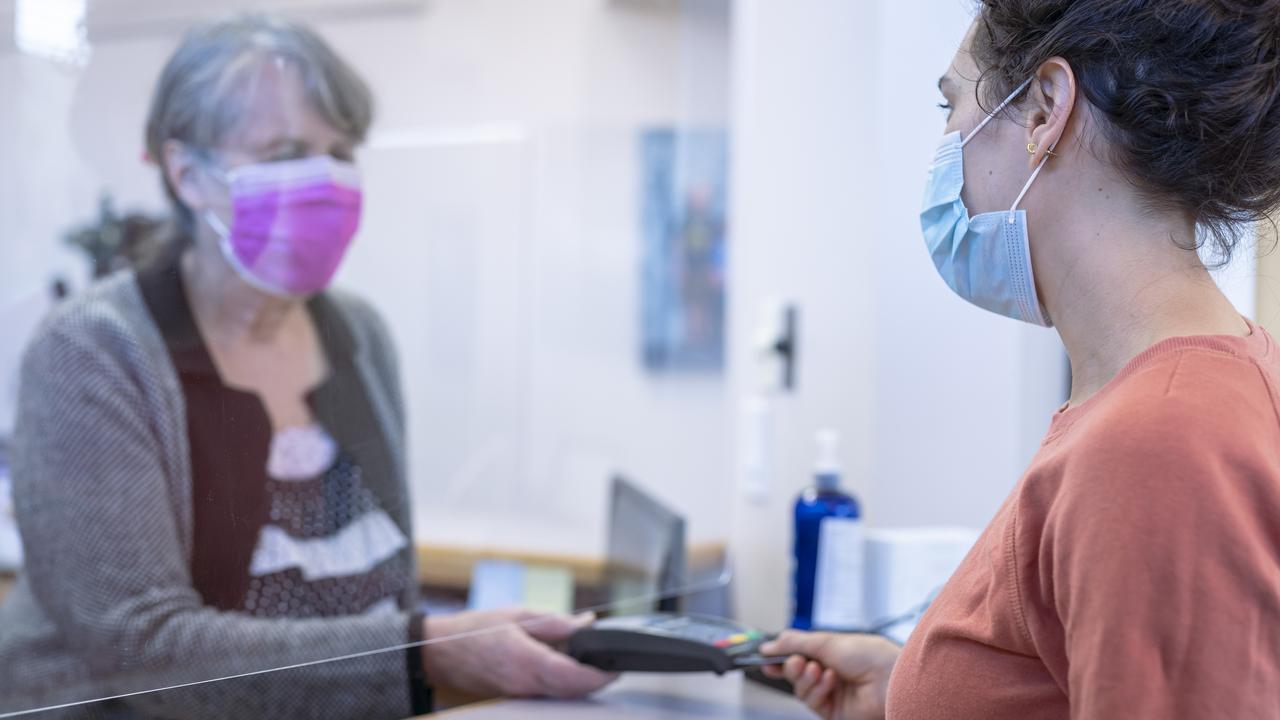
The Elms Family Medical Centre in Victoria announced recently that it could no longer offer bulk billing to pensioners, health care card holders and children, with a discounted fee to be paid instead.
“This is due to inaction by successive governments in addressing the rising cost of providing quality medical care,” the practice said in a Facebook post.
The GP claimed the cost of providing healthcare has been rising by about 5 per cent every year but, despite this, the government has not increased the Medicare Rebate at all between 2014-2018 and it has only gone up by 0.5 per cent per year since.
“Quality care is no longer sustainable based on bulk-billing. The income from a consultation goes toward the running of the entire clinic and not just to cover the doctor’s fee,” the practice said.
Lowndes Street Clinic issued a similar statement on March 10 saying it has had to cut back on who can access bulk billing in order to made the business ”viable”.
“This may not be news that some of you want to hear with everything going on, but we have no choice!” the GP said.
“We tried to maintain our bulk billing policy for all the concession card holders for over a decade and have been absorbing the annual price increases over the past 10 years which was made worse by the ongoing freeze on Medicare rebates so we are not getting paid any more than we were 10 years ago.”
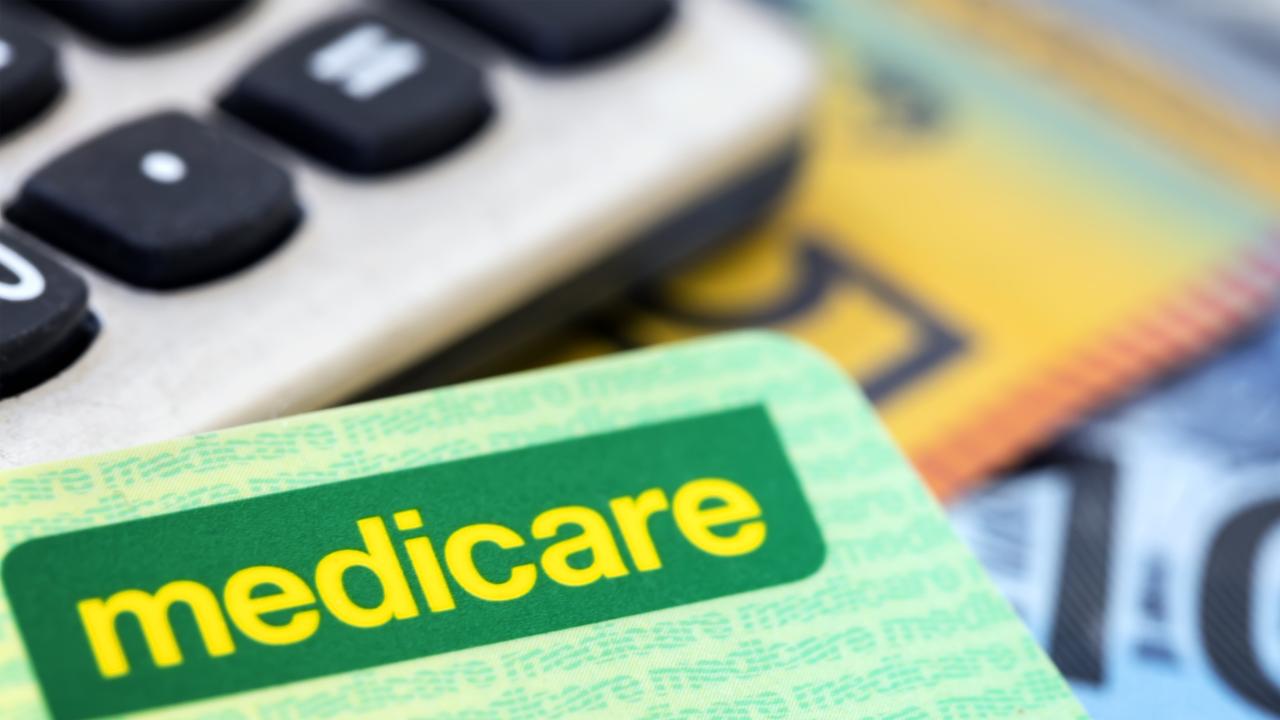
The clinic also cited the recent hike in prices for all expenses, including utilities, medical consumables, insurance, registrations, maintenance, cleaning and accreditation fees.
“Therefore, it was inevitable to make such changes in order for our business to survive and continue to provide quality health care to you,” the clinic said.
Dr Mel Mapleson, who is based at Kirrawee Family Medical Practice in Sydney’s Sutherland Shire, also had to inform her patients that from June 1 the clinic would be a fully private billing practice.
She also revealed a number of fees would be increasing.
“This is due to the rising cost of providing quality healthcare in a small business setting,” she wrote on Facebook.
“Keeping the business viable so that we can continue to serve the community and avoid closure, a true risk many other practices have faced recently, is at the core of this change.”
President of the Royal Australian College of General Practitioners (RACGP), Karen Price, told news.com.au that is wasn’t surprising that some practices were raising their prices and reducing the amount of bulk billing appointments.
She said it “reflects the rising costs of providing high-quality GP services to patients”.
“General practice must be resourced sustainably to keep the doors open and the career attractive to new graduates,” Adjunct Professor Price said.
“Everyone deserves access to high-quality GP care, regardless of their postcode or income. “However, Medicare patient rebates don’t reflect the cost of providing services to patients across Australia, far from it.”
This means it has become increasingly difficult for GPs to offer bulk-billing to all patients, with many now choosing to offer it to only a select number of people, such as the elderly and children.
There have been fears this reduction in bulk billing could mean many Australians may put off visiting a GP for an issue they would have normally had checked out.

Prime Minister Anthony Albanese vowed to create a “strengthening Medicare fund” to make it easier and more affordable to see a GP.
The election promise, which costs $250 million every 12 months from 2023-24 over three years, aims to improve access to doctors and nurses and better manage complex conditions.
However, until that kicks in, Australians can expect to see more price rises at their local GPs.
The RACGP has been calling for urgent reforms in order to properly find primary care for all Australians.
“General practice is essential for people not just when they’re sick, but also to provide preventive care and so they stay healthy, and out of hospital,” Professor Price said.
“We need to ensure that everyone can see a GP when they need to, and never have to go without the healthcare they need.”
The RACGP has developed its Vision for practice and a sustainable healthcare system to show how a well-supported general practice team can deliver sustainable, equitable and high-value healthcare and benefits patients, providers and funders.
More Coverage

The group also commissioned professional services network PricewaterhouseCoopers (PwC) to complete modelling on the benefits of implementing this framework.
“Our PricewaterhouseCoopers modelling and international evidence agrees that when it comes to health care, cost efficiency and patient outcomes that general practice is at the top of the medical specialties,” Professor Price said.
“It’s time for the country to invest in the best of all health care solutions, complex, holistic and preventive care; General practice.”
Making $100,000 a year used to be a kind of salary holy grail for a lot of Aussies, but the country’s cost-of-living crisis has changed that completely.
The Australian economy is growing at its slowest rate since a sharp recession in the early 1990s and it’s particularly bad news for white-collar workers.
Another of the major Aussie banks has cut mortgage rates, helping people scraping together repayments or a house deposit.
What does it cost to visit the GP?
- Costs of your visit
Personal contribution
Bill from the gp.
- Medication costs
- If you have Dutch health insurance, the costs of your visit to the GP are paid for by your health insurer.
- You may be asked to pay a personal contribution if your GP does not have a contract with your health insurer.
- You may also have to pay a personal contribution for certain tests, examinations and medications.
- Your health insurer will send you a bill for these costs.
Costs of your visit to the GP
If you have Dutch health insurance, the costs of your visit to the GP are paid for by your health insurer. The GP notifies your health insurer that you are registered in the practice.
Internationals who live and work in the Netherlands are required to take out Dutch health insurance. But there are various exceptions, such as (unemployed) international students. They have to take out an international or student health insurance policy.
In this case, you might have to pay for your visit right away by debit card or credit card, and claim it back from your health insurer yourself.
The information below only applies to internationals with Dutch health insurance.
A ‘personal contribution’ ( eigen bijdrage ) means that you have to pay part of the costs yourself. Normally, you do not have to pay a personal contribution for care provided by your GP. In this case, it is important that your GP has a contract with your health insurer. If you visit a GP who does not have a contract with your health insurer, you may be asked to pay a personal contribution.
You may have to pay a personal contribution for certain tests or examinations. You can check this with your health insurer yourself. Your health insurer will send you a bill for these costs.
You could get a bill from your GP for certain types of GP care, such as certain care for chronic disorders.
Coverage of medication costs
You may also be asked to pay a personal contribution for some medications. You can check this with your health insurer yourself. Your health insurer will send you a bill for these costs.
Some medications are not covered by insurance; if that is the case, you have to pay for them yourself. This applies to most over-the-counter medications, and also to some prescription medications. Your health insurer can provide information on this.
Has your GP prescribed a medication that the pharmacy has to prepare especially for you? Such medications are sometimes covered, but not always. You can read more about this (in Dutch) at apotheek.nl .
Vond je deze informatie nuttig?
Scan de qr code met je telefoon.
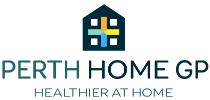
We understand the importance of clear and straightforward pricing in healthcare. That’s why we’re committed to being 100% transparent with our costs. Please complete the simple form below to help you navigate through our fee structure.
Important information
If you’re enrolled in Medicare you’re eligible for the Extended Medicare Safety Net (EMSN). Once your out-of-pocket medical expenses reach the threshold (below) in a calendar year, Medicare will cover up to 80% of any further out-of-pocket expenses you have for out-of-hospital medical services that are subsidised under the MBS. You don’t need to register if you are an individual with no dependants. Medicare keeps a tally of all your out of pocket expenses and gap amounts. If you are part of a family or couple you will need to register online – that way you will reach the threshold sooner. You only have to register once.
EMSN Thresholds (2024)
$811.80 – Concession card holders or Family Tax Benefit Part A
$2,544.30 – All others
Billing FAQs
We accept Credit and Debit cards. We do not accept cash. Payment must be made during your home visit.
The Pay Doctor via Claimant (PDVC) scheme allows Medicare rebates to be paid directly to your doctor via a cheque issued by Medicare.
During your home visit, your doctor will ask you to sign an authority form to request your Medicare rebate(s). You will be issued a cheque by Medicare which you must then forward to Perth Home GP so your doctor can be paid.
We are not able to receive funds from Medicare by electronic transfer, as regulations prevent us from doing so as we are not bulk billing for our home visit services.
Please forward the cheque to:
Perth Home GP PO BOX 420 Cottesloe WA 6011
We require 12 hours notice for cancellation of a home visit or telehealth appointment or a missed consultation fee of $50 is payable.
You will not be able to book with our service in the future until the payment is made.
The reasons why in-hours visit fees are higher is because:
- We only charge you a callout fee and fund the rest of the visit from Medicare
- Medicare rebates available to patients for after hours consults are significantly higher than for in-hours consults.
- Given doctors receive less remuneration from rebates for daytime visits we must charge a higher callout fee to cover costs.
Higher Medicare rebates are available in the after hours period for patients with unexpected illnesses (that cannot wait to be reviewed until the next in-hours period). It is for this reason that we are able to offer reduced callout fees after hours.
Medicare regulations prevent us from billing urgent items if patients are booked prior to the onset of the current after hours period. This is why we must wait until the after hours period before accepting bookings.
See our After Hours GP Home Visit page to learn more about the service and when we operate.
Some patients will be eligible to claim medicare rebates for Telehealth.
In order to claim a Medicare rebate for Telehealth you will need to meet one of the following criteria:
- Have had a face to face consultation with Perth Home GP in the previous 12 months.
- Children under the age of 12 months
- People who are homeless
- Patients receiving an urgent after-hours (unsociable hours) service (e.g the consultation occurs between 11pm and 7am and is deemed urgent by the consulting doctor).
- Patients of medical practitioners at an Aboriginal Medical Service or an Aboriginal Community Controlled Health Service
- People isolating because of a COVID-related State or Territory public health order, or in COVID-19 quarantine because of a State or Territory public health order.
If you do not meet the above criteria at the time of the consultation you are not allowed to claim a Medicare rebate.

IMAGES
COMMENTS
This chart from debt.org compares the costs of different medical conditions for emergency room and urgent care visits. Urgent Care. According to Debt.org, the average urgent care visit costs between $100 and $150 with insurance and up to $400 or $500 without insurance.. Nearly all procedures are covered by insurance, and urgent care centers typically have most of the equipment necessary to ...
Doctors check height, weight, sleep patterns, diet, and the vaccines required by public schools. The range for a yearly physical can be anywhere from $100 to $250 or more without insurance. A CVS Minutecare Clinic may charge just $59 for a sports physical, but not all organizations will accept this as proof of physical health.
The estimated national average cost of a new-patient office visit without insurance is $357. The cost of a doctor visit depends on whether you have private insurance, Medicare, Medicaid, or no insurance. If you do not have insurance, the cost of a doctor visit is typically between $300 and $600, but prices can vary depending on several factors ...
Key Points. According to the Agency for Healthcare Research and Quality, the average cost of a visit to the doctor's office in 2016 was $265, with expenses ranging from $159 to $419 depending on the specialty. At an urgent care center you can expect to pay between $100-200 to see a provider, plus the cost of any treatments or testing you may ...
The cost of a doctor visit is hard to quantify because there are many factors that go into what the final bill is. The average cost of a doctor visit, not including procedures or tests, range from $80-$170 across the U.S. Factors that determine the cost include: The purpose of the visit. What tests or procedures are involved.
A new patient visit may have a "new patient fee" added to the overall cost of an office visit fee. This additional cost is because a new patient visit is generally longer than a check-up appointment. The medical provider will get to know you and your medical history and perform a thorough examination. Type of healthcare provider
The cost of a primary care visit without insurance generally ranges from $150-$300 for a basic visit and averages $171 across major cities in the United States. For any additional services such as childhood and adult immunizations, lab testing, or prescriptions, there will be additional charges. Finding a primary care physician to monitor your health status during annual check-ups is a great ...
GP visit card weekly basic rates of income for people under 70; Category. Since 13 November 2023. Single person living alone. €418. Single person living with family. €373. Married or cohabiting couple (or lone parent with dependent children) €607. Allowance for each of first 2 children aged under 16.
About 80% of GP practices bulk bill, and 20% or less charge a fee for each visit. Medical services provided in a bulk billing arrangement imply that the public or private patient does not foot any medical costs. Medicare pays for all general practice medical costs. Many doctors also accept the medicare schedule fee without asking the patient to ...
Select procedure or service. Choose a procedure or service from the results listed. Step 3. Find typical costs near you. Explore the typical fees and costs for the selected service. Step 4. View specialist fees and a typical patient journey. Click on patient journey and specialist fees to learn more about specialist fees.
Welcome to Govt.nz | New Zealand Government
A visit to a doctor's office is relatively affordable in the U.S. However, if you are ill, additional costs can quickly add up. This might include fees for diagnostic tests, procedures, and follow-up visits. An initial consultation with a primary care doctor generally ranges from $100 to $200.
General practices are private businesses. They set their own fees for visits and other health services they provide. The cost of a visit will be lower if you are enrolled with the practice. This is because the Government subsidises the fee for enrolled patients.
Understanding the cost of your doctor visit. In the fourth installment of this 4-part series on health care costs, we look at the different types of care to help you better understand what you'll need to pay. Understanding your health plan costs can help you choose the right coverage and budget for your health care spending.
Visit fee codes are also billed by age groups and whether they are seen in the office or out of office: GP In Office Visit Fee Codes . 12100 Visit - in office (age 0-1) 00100 Visit - in office (age 2-49) 15300 Visit - in office (age 50-59) 16100 Visit - in office (age 60-69) 17100 Visit - in office (age 70-79) 18100 Visit - in ...
The video visit came with an "administrative fee" of $50 that she would have had to pay upfront, she says — five times what the copay would have been for an in-person session.
Claiming Medicare benefits through myGov. If you're enrolled in Medicare, some of your costs of seeing a general practitioner (GP) or specialist may be covered by Medicare. Make sure you take a valid Medicare card or number with you when you see them. If your GP chooses to bulk bill, Medicare will cover the full cost and you won't need to pay.
When you're investigating a health issue with your GP or a specialist doctor, you may need tests to identify or understand your condition. The costs of any tests may be on top of the fee you're charged for your GP or specialist visit. It's a good idea to ask your doctor about the cost of any test before getting it done.
Check the status of a registration. You can use your reference number to check the status of your GP visit card registration online. When you apply online, you get a reference number at the end of the application process. When you apply by post and give a mobile number, we send a reference number by text. If you don't give a mobile number, we ...
A typical GP visit fee is €60 - some charge as much as €80 some may charge as little as €40. There is no regulation of GP fees - and the Dept of Public Expenditure doesn't seem to know what the average GP fee is. It was estimated in, 2019 , that GPs in Ireland received in the region of €200m-€220m per year from patients without ...
And gap fees are rising. Across all GP visits, the average out-of-pocket cost has risen to $42.44, compared with $28.12 a decade ago. For the first time in Medicare's history, the $40.70 average ...
The GP claimed the cost of providing healthcare has been rising by about 5 per cent every year but, despite this, the government has not increased the Medicare Rebate at all between 2014-2018 and ...
In brief. If you have Dutch health insurance, the costs of your visit to the GP are paid for by your health insurer. You may be asked to pay a personal contribution if your GP does not have a contract with your health insurer. You may also have to pay a personal contribution for certain tests, examinations and medications.
It is free to register. Once you have had two home visits with Perth Home GP (in the past 24 months) you are eligible to enrol with Perth Home GP for MyMedicare. Benefits include: 1) Access to Medicare rebates for telehealth consultations for longer than 20 mins. 2) Bulk billed Telehealth consultations for patients with a concession card.